#non native species uk
Explore tagged Tumblr posts
Video
Love is...An Alien Fungus that smells of Corpses... by Will Atkins Via Flickr: This Devil's Fingers Fungus (Clathrus archeri) seems to be trying to communicate a message of peace and love...
#Devil's Fingers#Devil's Fingers Fungus#Clathrus#Clathrus archeri#Heart#Love#Fungus#Fungi#European Fungi#British Fungi#UK Fungi#Hampshire Fungi#New Forest Fungi#New Forest#New Forest wildlife#Fungi of Britain#Fungi of the UK#Fungi of Hampshire#Fungi of Europe#Fungi of the New Forest#Heathland#Mushroom#Toadstool#Toadstools#Alien Species#alien wildlife#Non-native species#non-native wildlife#Nikon#Nature
39 notes
·
View notes
Text
Apparently, redwoods love our damp climate. Our back neighbours used to have one, but they cut it down. Not so suitable for suburban gardens...
Can any arborists weigh in on this and any effects they might have long term on the ecosystem? Unlike in California, our sequoia are spread out all over the country. It's very unlikely that these trees will be exposed to forest fires (actually maybe not with climate change doing what it does)
13 notes
·
View notes
Text
Dandelion News - December 15-21
Like these weekly compilations? Tip me at $kaybarr1735 or check out my Dandelion Doodles for 50% off this month!
1. 7 good things humanity did to combat climate change in 2024

“The UK […] closed its final coal power plant in October. [… In India,] the share of power provided by coal dropped below 50% for the first time since the 1960s. [… A non-profit] has provided solar energy to more than 6,000 of the poorest Nigerians.”
2. California Voters Said Yes to Prop 4, a Win for Birds, People, and Our Shared Future

“[…] Prop 4 will direct millions of dollars for water conservation and habitat restoration [… and] includes a requirement that at least 40% of its funding go to lower-income and climate-vulnerable communities.”
3. This Pennsylvania school is saving big with solar and EV school buses

“Steelton-Highspire’s solar arrangement will save it about $3.6 million over the next 20 years. As for the electric school buses, Steelton-Highspire is one of thousands of districts able to access federal rebates from a $5 billion program created by the 2021 Bipartisan Infrastructure Law.”
4. Autism Speaks Canada shuts down in January. Good.

“As Canada’s autistic-led advocacy group […] we are relieved that Autism Speaks Canada will be shutting down in January of 2025. This is an opportunity for autistics and our families to collaborate locally to build new, neuro-affirming spaces and projects.” [If you don’t know why this is a good thing, please click here]
5. LA Zoo hatches first-ever perentie lizards, one of largest lizard species in the world

“The LA Zoo is one of only three institutions accredited by the Association of Zoos and Aquariums that have successfully reproduced them[….] Adult perentie lizards can reach more than 8 feet (2.4 meters) in length and can weigh more than 40 pounds (18 kilograms), the zoo said.”
6. Research reveals an inexpensive fix for California's struggling wildflowers

“[… R]aking [“dead, invasive grasses”] is decidedly less labor-intensive and more ecologically friendly [than other management techniques…, but doing so] increased plant diversity overall, reducing invasive grasses […] while increasing both native and exotic wildflowers[….]”
7. A new EV battery could last more than 8 times longer, travel farther
“[… A] typical battery lasts 2,400 cycles, while the new battery lasted more than 20,000 cycles. [… Used batteries could be repurposed] for grid storage on wind and solar farms, the study notes.”
8. Women who are homeless in Boston find safe space and care at 'HER Saturday'

“Women can get lots of other care on the spot — from sick visits and basic health screenings to Pap smears and contraception. [… They also come for] "The makeup, the snacking and the girl talks. And ... picking out a new outfit," said Pinky Valentine [“a homeless transgender woman”].”
9. ‘It absolutely took off’: five UK biodiversity success stories
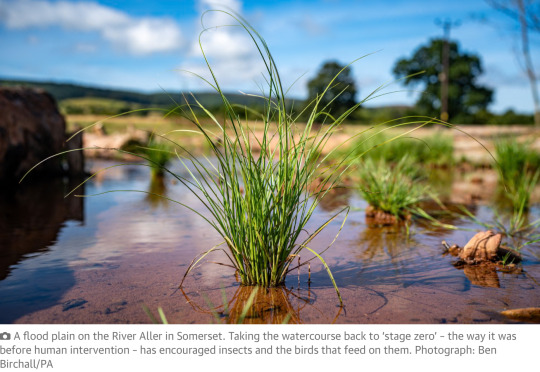
“[…N]ew methods are emerging to preserve, improve and generate new habitat and, in many cases, attract back or reintroduce species not seen for decades. After a nudge, ecosystems are often doing much of the heavy work themselves.“
10. Personalized gifts really do mean that little bit more to your loved ones, says research

“Research has also shown that receivers of personalized gifts are more likely to take care of them. […] In this sense, gift-giving can be not just an emotional exchange, but also a more sustainable one. A carefully preserved [personalised] gift avoids waste and brings long-term satisfaction.”
December 8-14 news here | (all credit for images and written material can be found at the source linked; I don’t claim credit for anything but curating.)
#hopepunk#good news#clean energy#world news#california#birds#habitat restoration#pennsylvania#school#electric vehicles#solar power#actually autistic#autism speaks#canada#autistic community#lizard#zoo#wildflowers#battery#technology#boston#homelessness#unhoused#biodiversity#christmas gift#uk#unique gifts#holiday#christmas#community
60 notes
·
View notes
Text
The Best News of Last Week - May 29, 2023
Rwanda’s life expectancy has increased by 20 years in the last 20 years

What did Rwanda change? Three developments stand out: low-cost community-based health insurance plans, national investments in rural health posts, and ramped-up foreign collaborations. In 2020, more than 90 percent of Rwanda’s people had some kind of health insurance. This stands out relative to other low-income countries, where on average 31 percent of people have health insurance.
2. Brandon School Division rejects call to remove library books on sexuality, gender identity

Loud cheers erupted inside a packed high school gymnasium after the Brandon School Division rejected a call to remove books dealing with sexuality and gender identity from libraries. Hundreds of people in Manitoba's second-largest city showed up for the marathon school division meeting, which ran into the early morning hours.
The trustees ultimately voted 6-1 to reject a proposal to create a committee of trustees and parents to review books available in division schools.
3. Lotto winner pledges to fund classrooms in his native Mali

Happiness for one lucky North Carolina resident comes not from newfound wealth from a lottery win, but using those winnings to help schoolchildren -- in this case, from Mali.
Souleymane Sana of North Carolina won $100,000 from a scratch-off ticket. Relocating to the United States from Mali -- a war-torn county in West Africa -- Sana is using his earnings to create a non-profit to help school kids from his hometown.
4. Mountain gorillas rebound thanks to Ugandan veterinarian

In 2018, as their population topped 1,000, they were removed from the critically endangered list and their status upgraded to just endangered. That positive step was due, in no small part, to Ugandan veterinarian Dr. Gladys Kalema-Zikusoka.
Her working home is Bwindi Impenetrable National Park, home to roughly half of the world's mountain gorillas. But early on she also realized that to help the animals and keep them free from disease and poaching, she needed to also help their human neighbours, launching successful initiatives to improve the health and well-being of the people living around the park.
5. Imports of ivory from hippos, orcas and walruses to be banned in UK

Ivory imports from hippopotamuses, orcas and walruses will be banned under new legislation to protect the endangered species from poaching.
The Ivory Act, passed in 2018, targeted materials from elephants, but a loophole meant that animals other than elephants, including hippos, were being targeted for their ivory.
6. Solar power due to overtake oil production investment for first time in 2023

Investment in clean energy will extend its lead over spending on fossil fuels in 2023, the International Energy Agency said on Thursday, with solar projects expected to outpace outlays on oil production for the first time.
Annual investment in renewable energy is up by nearly a quarter since 2021 compared to a 15% rise for fossil fuels, the Paris-based energy watchdog said in its World Energy Investment report.
7. Paralyzed man walks naturally, thanks to wireless ‘bridge’ between brain and spine

Gert-Jan Oskam lost the ability to walk in 2011 when he injured his spine in a cycling accident in China. Six years later, the Dutch man managed to take a few short steps thanks to a small array of electrodes implanted on top of his spinal cord that delivered nerve-stimulating pulses of electricity.
Today in Nature, an international team of researchers reports giving Oskam a better fix, a way to digitally bridge the communication gap between his brain and lower body. Brain waves signaling Oskam’s desire to walk travel from a device implanted in his skull to the spinal stimulator, rerouting the signal around the damaged tissue and delivering pulses of electricity to the spinal cord to facilitate the movement. Oskam can now walk more fluidly, navigate obstacles, and climb stairs.
----
That's it for this week :)
This newsletter will always be free. If you liked this post you can support me with a small kofi donation:
Buy me a coffee ❤️
Also don’t forget to reblog.
SUBCRIBE HERE for more good news in your inbox
378 notes
·
View notes
Text
Larches
We're talking about Larix decidua, the European Larch, because lads I've got some choices to make.
Why? Because this little slut is a NON-NATIVE CONIFER.
AND A NASTY ONE AT THAT. You know how I mentioned in my Moorland research notes that conifers from nearby plantations have a nasty habit of spreading? Larches are the worst offender of that little quirk, and can be intentionally used to afforest an area to get it ready for new trees.
That's a good thing in certain areas-- damage from mines, intensive farming, and ecological disasters can be fixed with larch. Here in America and other parts of Europe it is a useful tool in conservation (especially in its native range)
But NOT in England. The larch was introduced in the 1600s for lumber purposes and gobbles up moorland like a glutton. It is a voracious pioneer species of low-nutrient soils, much like the two birches, scotch pine, and field maple.
The BB timeline, however, begins around the late 1800s with Hollyleaf's Century. Victorians. Not the ROOT of all evil, just a metastisis of it. The destruction of SkyClan's territory is somewhere in the 1960s.
So while it's not impossible that one of the two plantations encountered in the story are larch, I would like to keep it consistent. Larch plantations aren't the big bad in the modern era-- it's Sitka spruce in 1st place (accounting for a massive percentage of forest cover in the UK) and Douglas fir in a more distant second.
It's unlikely Clan cats would encounter larch, keeping in mind the history of both regions they live in, unless I make up a reason JUST for it to be here.
So I'm thinking about blasting it away in names, in line with my other ecological replacements like changing Hickorynose to Chicorynose. That would mean a major character, Larchkit, Larchface in StarClan, would become Lurchface. A lurch being the split between two major branches of a tree.
(Which makes perfect sense since his secret father, Appledusk (crabapple-sunset in clanmew), is named after a tree that likes to branch like that. Birches tend to grow straight.)
But before I nuke all mentions of larch from orbit, ARE there any objections?
#Me. Evil overlord. Standing at a big red death ray button#Turning over to the minions and creatures like ''does anyone have anything to share before I press this''#Alternatively. Me about to press the Eschatron 9000#Ecological overhauls
79 notes
·
View notes
Note
"#...though everything in me wants to analyse the intersection of power and species in this film I must grit my teeth and acknowledge it is#Not That Deep and british ecology will have no meaning in a fun little film adaptation from the 50's"
No, please keep talking. This is the shit I live for! Okay, we know the truth is that is makes zero sense, but trying to make sense of it sounds very fun.
My own tuppence worth on the subject is just noting that the film would have taken place only about 100 years after the Norman invasion, which presumably in this Disney animal 'verse means that lions and other non-native predators would have been in every major position of power for all of living memory. It makes me wonder if Marian being a fox could mean she was descended from and Anglo-Saxon noble line that was deposed by the Normans. This could then add to the reading of invasive species (the rich and nobility) harming the entire ecosystem of society by over-exploiting native species.
So we have a story of the trickster non-apex predator who fits into this ecosystem, who belongs there due to having a place in the multi-species (multicultural) society versus the invasive apex predator who is a symbol of royalty, divinely appointed, and yet he is very much not a real part of this community he would nevertheless rule.
As a Brit, it's pretty reflective of how the nobility of the UK still works nigh on 900 years on. It's not anti-immigrant (see the bloody tortoise character, which is definitely a non-native species) but I read it as a condemnation of people with power and status who are so removed from the common people they rule that they may as well be of another species from another continent.
King Richard returning at the end kind of undercuts this reading, though, so I am definitely trying to shove my anti-monarchist views into a narrative not made to accommodate them.
Anyway, please share your thoughts on this, I need someone else to go way too deep into things with!
@the-phony-king-of-england
You are both wonderful, terrible enablers and I adore you.
Honestly Lancre you've pretty much nailed the historical implications I was trying to articulate in my own brain - that of the rich being animals that do not suit the area they're occupying.
Be warned I'm going to expand on this via an ecological wandering ramble below with no clear conclusion, so yay???
This. Gets. LONG.
(Also I'm shaking hands with you tightly, Brit for Brit on monarchial views here)
Aight ok. Basics first.
The Disney 70's (not 50's, my bad) Robin Hood is a loose adaptation of various folktales regarding Robin of Sherwood, who's tales originate at earliest, from the 1100's, and stretch to the 1500's. Robin as a singular figue never likely existed as just one person, and instead is a conglomerate of various daring, altruistic thief figures of semi-dubious origin. Dubious because this is medieval England and there ain't much to do but get piss drunk and swap tales around the pub fireplace, so there's always an element of inaccuracy and exaggeration for entertainment.
The setting of the story takes place in the city of Nottingham, and the surrounding Sherwood Forest. Both of which still obviously exist, though Nottingham is obviously MUCH larger than it was, and the forest has been reduced to mostly pine plantations and scattered ancient remnants of the original woodland.

There's no map for the medieval borders of the forest becuase officials were relying on collective memory and physially walking around the wood occasionally to demark it's location, but guesstimates would move he green area on the left image to encompass Nottigham and widen the forest eastwards a bit too.
The above reduction in size makes me smad, but that's beside the point. Sherwood in all it's medieval 100,000 acres was a royal wood - permissible to hunt in ONLY for the King and his fave besties. This is a point I'll come back to later. There was 1 (ONE) road to london south through it, and that road was prime time for Robin & co. to do as they do best, as we see in the opening scenes of Disney's adaptation.
The disney adaptation uses anthropomorphic animals to depict the typical robin hood story.
This is where my little conservation-masters-equivalent-certificate having bum starts to get it's knickers in a twist.
Like. I get it. On a folklore and symbolism level, the basic animals make sense. Robin is a red fox, a figure in British folklore often associated with cunning, trickery and swiftness - making him a perfect rackish protagonist, an outlaw with a heart of gold. Foxes are known to steal, and adapt very well to both modern urban environments and the medieval woodlands and fields. Brilliant choice, no notes.
John.
...John.
*deep sigh*
I KNOW. Our national animal and symbol for royalty is a lion. I KNOW. John and Richard being lions is a direct tie in to the lion coat of arms of the Duchy of Aquitaine, one of the ruling families to invade as part of the norman invasion. John even speaks french on occasion in the film, and directly refers to it as 'the norman' way! I GET IT.
That we have not had any lions, much less the african lion alive today, living on our island since the last glaciation period is something I'm still bitterly annoyed about, but whatever. It's fine.
That this also implies that Normandy, aka modern France, has a thriving population of lions running about in some fusion of french temperate flats and the kenyan savannah is something I just have to grit my teeth and nod about, but WHATEVER IT'S F I N E -

*Insert aggressive bardcore accordion music here*
Ugh. Moving on.
Ecologically, and story wise, it would make most sense for the denizens of Nottingham to be anthropomorphised as animals native to the region. And for the most part this holds up. We have the rabbit family, the mice, the owls, blacksmith dog, the singing rooster and Lady Cluck the Chicken, who has my WHOLE heart in this film. Friar Tuck is allegedgly a badger...
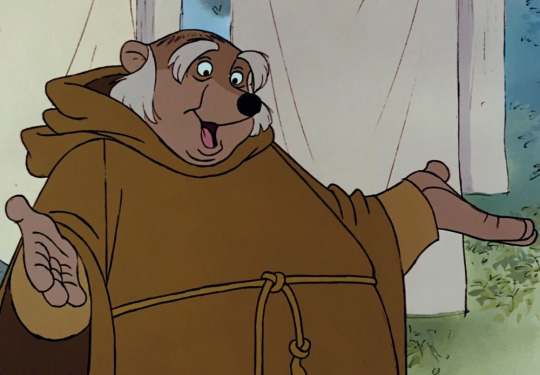
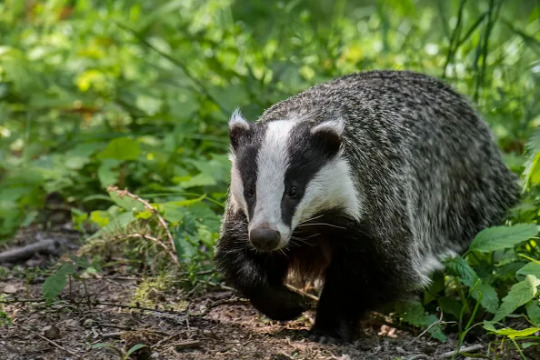
...which I doubt, but I'll allow it I guess. (I would prefer the black & white be actually depicted, and for the man to have claws. Let him have his claws he deserves them.)
Then...we have Little John.
British ecology is famous as being incredibly lacking in the modern day, due to a combination of land management changes, hunting, climate change and our being an island nation. All our major carnivores are extinct, and have been for a long time.
John is a brown bear.
Brown bears have been extinct in Britian for over 1000 years.
Even at the earliest possible time of the film, brown bears will have been dead for 200 years. John's existence should have been something almost goddamn-messiah like in this film. Last of the giants type stuff. I'd love for Lancrew's above point of large british animals to have been defeated 100 years prior by Norman invading lions (deeeeeeeep sigh) to hold up here and have John be a last descendant of nobility. He's a common man in all the legends, but it would be a great addition to how he schmoozed John at the archery tournament.
Looking at Johns forces now instead...
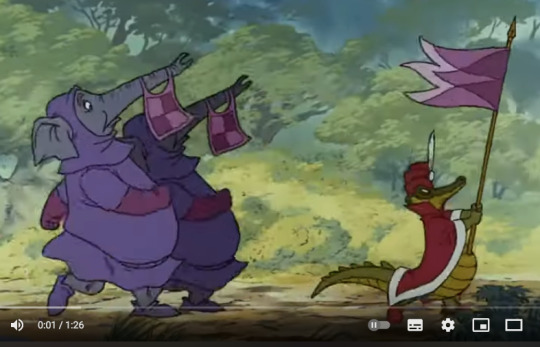

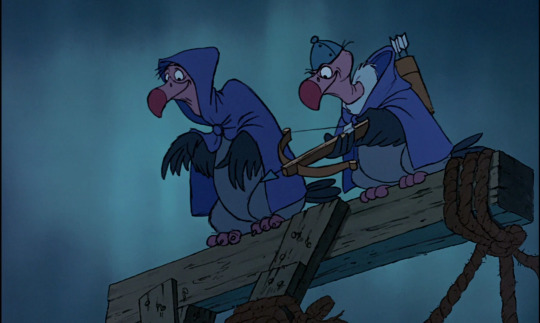
...what the FUCK is going on.
This, I GUESS, is an easy hand wavy way to visualise bad guys vs good guys. Cute forest critters vs afro-french (DEEP SIGH) mega herbivores & carnivores shows an obvious power inbalance between the local animals and Johns forces, and explains why the townsfolk can't rise up on their own. Rabbits aren't exactly going to do much against halberd weilding plate armoured legions of Rhinoceros.
BUT GOD ALMIGHTY WE COULD HAVE TRIED FOR EUROPEAN FAUNA, AT LEAST A LITTLE BIT???
Easy stuff first. Sir Hiss looks about 1, maybe 1.5 meters long, is green, and has no allusion to venom in the film. I've got him down as a grass snake, our largest species. Excellent. No notes.
The wolves are also easy. Wolves didn't go exinct in England until the 1500's, and alledgedly survived in Scotland until the 1700's. While I personally dislike the depiction of wolves as purely villainous in media, here the Sheriff and his men are the perfect foils to Robin. A larger canine species, moving in packs and hunting him in his own woods (that he's SQUATTING IN, because the woods are owned by John and the crown!), and exempliying the selfishness of the crown by having the Sheriff be dressed in bright colours, with fashionable sleeves while the townsfolk are in rags.
Also aside from the Friar, who is fat in every depsiction of the story, the Sherriff is noticably overweight compared to his men and the pallid, sickly looking townsfolk. The fact his clothes fit him when he's a body type almost no-one else has is a great further subtle show of proof that he's living indulgently and comfortably in his life of active cruelty enforcing John's will, and has no intention of stopping.
His other soldiers....
...ok. Since Lady Cluck - a chicken - is half the size of brown bear little John, there's some leeway for size. The vultures I think could feasably have been ravens, magpies or crows: still a little subtly morbid still, fitting for guards. Or maybe storks or herons, or even seagulls! To keep the silly antics and mean streak.
I- look. The rhino's are the main kind of guard featured. They're big, they're strong, they're imposing to look at and occasionally bumbling.
European Bison were RIGHT THERE.
Pigs and wild boar are depicted as background characters in a couple of scenes. do. Do you have ANY idea how large wild boar can be? Especially 500+years ago?! These things FUCKED. And they actively fucked you up when they wanted to. This wouldn't even be a case of british animals being wiped out in the wars - these things were prevalent all over Europe!
WHERE ARE THE DEER. The penultimate prey species for large cats?????? Not a single goddamn doe or stag have I seen in this film?? Sherwood Forest was a DEER HUNTING FOREST?! Not even as soldiers, Robin should have been able to help anthropo-medieval Bambi away from the wolves at least once.
I am not going to even fucking talk about the crocodile. Madam, in whose climate? We can barely keep 3 species of finger-length lizard alive through our wet, cold, windy climate, howmst the FUCK-
My only course of action is to admit that at some point in this universes timeline: There rose a kingdom of immense power in East Africa that has since, over many generations, colonised northwards and subjugated/wiped out European ecosystems. They reached the british isles around the medieval period, and now thanks to Prince John and Sir Hiss hypnotising King Richard, they are continuing expansion eastward via the crusades.
The vultures are there to eat the carcasses of the conquered nations armies. There. Evil as fuck but also exonomical.
Do Not Speak to Me About The Raccoons.
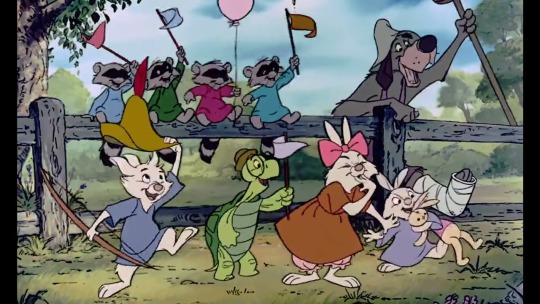
As far as I'm concerned these are oddly coloured red squirrels.
I hope you enjoyed this absolutely insane spiel of nonsense.
#thalassa responds#disney villains#Disney Robin Hood#Prince John#sir hiss#robin hood 1973#I have FAR too many thoughts abouth this film#like yes! Cute film absolutely 1000% is not that deep#but the ecological implications????#If humans had never evolved - or stuck around after Britain became an island we likley would have a 'complete' ecosystem with top carnivore#so maybe we would still have the lions and hyenas the fossil record shows 10'000 years ago#as well as megaloceros#but we're the top predator here now and all depictions of anthropomorphised british life never get this#if you remove the humans for animal characters - yet don't have any of the top predators anthropomorphised - then you are showing -#- an ecosystem that has either been molded by human hands or suffered a cataclysm it is still recovering from#anyway enjoy I had far too much fun with this
8 notes
·
View notes
Text
The taxonomy of Sly Cooper: Part 2
So, the first entry of this series was pretty well-received. Here's part two. This time we'll be focusing of the villains of the first Sly-game, The Fiendish FIve.
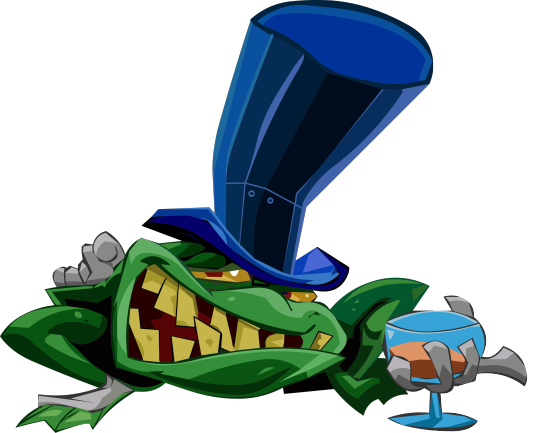
Raleigh was actually kinda difficult to pin down, as he is pretty much just a generic non-descript frog. Looking at a list of amphibians in the British Isles didn't exactly narrow it down, as the UK also has several non-native species of frogs with varying degrees of naturalization. Eventually I settled with the species that I thought best matched his colouration, the marsh frog (Pelophylax ridibundus)
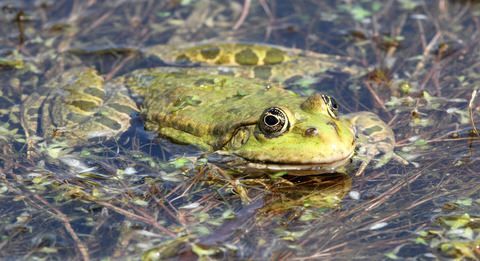
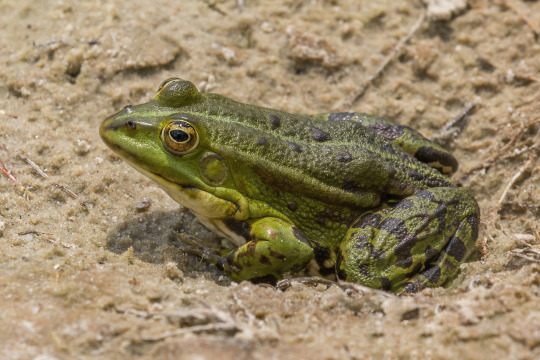
At up to 4 inches long, the marsh frog is the largest and one of the most widespread frog-species native to Europe, although it isn't native to the UK, being introduced in the 1930's. Within the UK it is primarily found in south-eastern England. Researchers are still undecided as to wether or not it poses a threat to the local ecosystem.
True to their name, marsh frogs are generally found in marsh regions, being more tolerant of saltwater and pollution than other frog-species. Like most frogs they primarily feed on insects and other invertebrates, but thanks to their size they can also prey on smaller fish, birds, and rodents.


In contrast, Muggshot was fairly easy to figure out. He is unsurspirisngly an american bulldog, particularly of what is called the "bully"-type. Domestic breeds generally aren't my forté, but I'll do my best.
American bulldogs were originally an offshoot of the english bulldog, which were brought to America following the colonization, where they were primarily used as livestock guardians and catch dogs. The "bully"-type ( also known as the "Johnson" or "Classic"-type) was created by dog-breeder John D. Johnson in the mid 19th-century, by crossbreeding standard american bulldogs with an english bulldog, resulting in a line of dogs that are bigger, more muscular, and with a more pronounced underbite than the standard variation, all very reminiscent of Muggshot.
Primarily used as guard dogs nowadays, american bulldogs are considered to be a loyal and courageous breed with strong protective insitncts. They riquire rigourous training and exercise in order to stay healthy (and make sure they don't skip leg-day, like a certain someone)
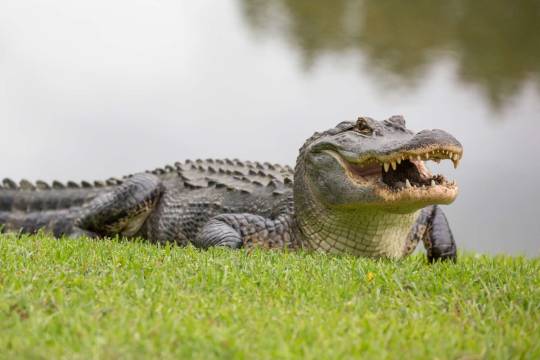
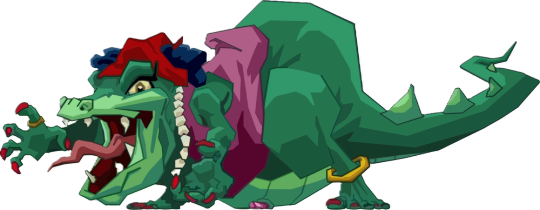
Mz. Ruby also proved to be alittle bit tricky. I had originally pinned her as an american crocodile (Crocodylus acutus) given that she lives in Haiti, where the only native crocodillian is the american crocodile. The Sly Cooper Wiki refers to her as an american alligator (Alligator missisipiensis), but there is nothing in-game that confirms this. However, i then realized that she is probably Cajun given her accent. The Cajun culture originates in Louisiana, where the only crocodilians are american alligators, so that kinda seals the deal.
You wouldn't really know that just by looking at her though. Alligators are distinquished by having short, broad snouts with an overbite. If we look at Mz. Ruby, while her her snout is kinda broad, she sure as hell doesn't have an overbite.
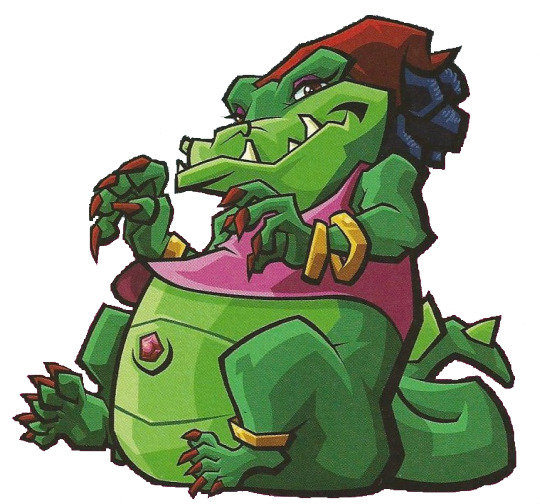
Petty taxonomy bullshit aside, american alligators are found throughout the swamps, rivers, and lakes of the south-eastern United States. They are the apex predators of their environment, and eat pretty much any animal they can get their jaws on. Although their range overlaps with that of the american crocodile in Florida, the two species generally don't compete over resources.
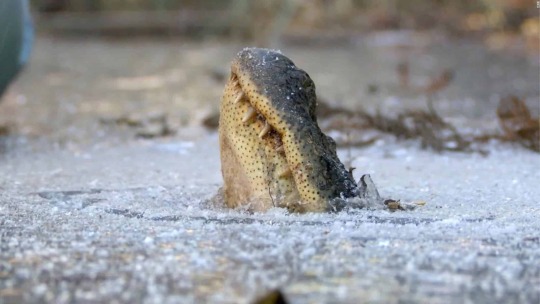
American alligators are some of the most cold-resistant reptiles, being able to survive temperatures as low as 40 degrees fahrenheit or 7 degrees celsius. Should the water they live in freeze over they can go into a kind of suspended animation, by digging a hole in the ice to breathe through, whilst lowering their metabolism and bodily functions to a minimum. Not quite the breaking of the laws of life and death that Mz. Ruby has got going on, but still pretty cool.


Moving unto the Panda King, and yeah... There is no getting around the fact that he is clearly meant to be a giant panda (Ailuropoda melanoleuca). I briefly toyed with the idea of him being one of the many extinct species of Ailuropoda, but that was too far-fetched.
Giant pandas are of course renowned for their cute appearance, strict bamboo diet, and for being the face of animal conservation. Though infamously endangered by habitat-loss in their native mountain range, they are considered less endangered nowadays, being given the IUCN-status of Vulnerable.
And no, pandas aren't an evolutionary dead-end or a lost cause in terms of conservation, and don't deserve to go extinct. Anyone who tells you otherwise likely doesn't understand ecology.
The giant panda is notable for having an extra long sesamoid bone on its front paws, in additon to its five fingers. While not a true finger, this bone practically works like an opposable thumb, which comes in handy when handling bamboo shoots (though it'll take some time before they master the art of pyrotechnics)
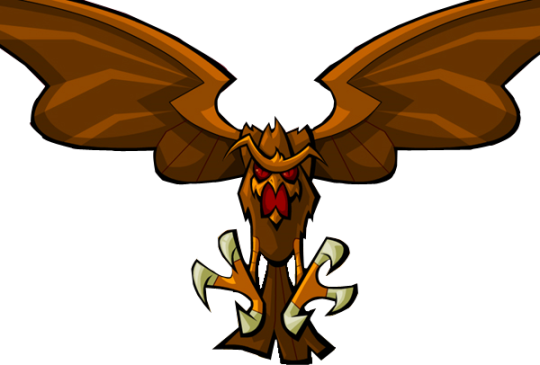

Finally we have Clockwerk, the immortal arch-nemesis of the Cooper Clan. His in-game description doesn't give us much to work with, other than that he is an owl of some kind. We do know that he apparently had an orange plumage before becoming a cyborg. Due to his large size and having a base in Russia, some people have identified him as a eurasian eagle-owl (Bubo bubo), which I can defintiely see.
I however subscribe to the theory that Clokcwerk was originally from Ancient Egypt, and thus like to think that he's a pharaoh eagle-owl (Bubo ascalaphus).
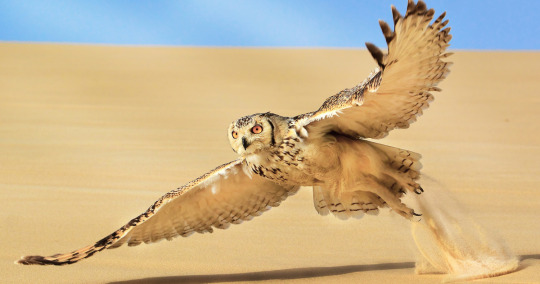
With a wingspan of about 3 feet, the pharaoh eagle-owl is actually one of the smaller members of its genus. It is found throughout Northern Africa along with parts of the Arabian Peninsula. It likes to nest around cliffs and river valleys, where it primarily feeds on rodents, reptiles, and other birds, but occasionally takes on prey as large as hares and desert foxes.
The ancient egyptians associated the owls with wisdom and knowledge, but also regarded them as symbols of mourning and death. Owls were sometimes mummified alongside humans, as it was believed that their night-vision would help guide the deceased through the darkness of the underworld.
15 notes
·
View notes
Photo

November 10th, 2024 Posted In: Garden Style & Living The best cottage garden plants have pretty blooms. They flower for a long time and are often fragrant. And above all, they are plants which grow well in your climate and soil.But there are no rules in cottage garden style. You can adopt a colour theme as Tim Pilgrim has in this contemporary cottage garden.Or you can grow a glorious patchwork of different flowers together.You can plan a cottage garden, but you don’t have to. You can let it evolve, experimenting over time. If you love to buy plants on impulse, then this style is perfect for you.So this is a list of the best cottage garden plants, with their pros and cons. They all have charming flowers, some are sweetly scented and they’re all perfect for pollinators. That’s not just bees but butterflies, moths and other insects.These plants grow in a wide range of climates and zones, so you’re likely to have a variety available to you.Firstly, decide whether you want a low maintenance cottage garden, a romantic ‘cottagecore’ haven or you’re prepared to spend time and effort on creating a classic cottage garden.What makes a garden a cottage garden?Cottage garden style is colourful and relaxed. It has informal plantings of flowers, fruit and vegetables. See what is cottage garden style and how to achieve it?The name derives from the idea that workers in cottages would use plants they could grow cheaply and easily. This can mean choosing native plants. It certainly means using plants that grow easily.Cottage gardens don’t need defined areas. Whereas English country garden style will have lawns, herbaceous borders and a separate ‘veg patch’, everything can be grown together in a cottage garden.A cottage garden doesn’t look designed. It evolves slowly, with vintage finds and thrifty hand-me-downs. Paths, pots, troughs, arches and other landscaping elements are recycled or upcycled. See A Rustic Cottage Garden on A Budget , Recycled Garden Ideas from RHS Chelsea and Eco-Friendly Garden Design for ideas.You could also use natural materials, such as stone or wood, for furniture and hardscaping elements.Recycled zinc bins and pavers with thrifty vintage garden furniture in Arit Anderson’s peat-free show garden at RHS Hampton CourtWhat are the most ‘cottagecore’ flowers?‘Cottagecore’ is a social media term. It stands for a simple, rustic life where you grow your own food, bake your own bread and make home-made clothes. It’s a lifestyle ideal around simplicity, sustainability and biodiversity.The hashtag #cottagecore on social media is associated with pretty cottages, romantic floral dresses and other picturesque rural elements such as keeping hens or ducks.All the plants in this post have charming ‘cottagecore’ flowers. But if you want to emphasize the ‘cottagecore’ ethos, combine flowers and veg growing and make sure your garden supports biodiversity.Find out which plants are native to your area, too, as these will support your local wildlife best.However, non-native plants can also support biodiversity, especially when weather patterns are unexpected. For example, some non-native plants flower earlier or later than your native plants. This helps pollinators if there is warm weather earlier or later than usual.So ‘grow native plants’ isn’t a ‘one size fits all’ rule.Old bricks, a pretty gate and ducks – elements of ‘cottagecore’ style.Asters (asters & symphyotrichum)Hardiness varies, but some down to minus 40C/minus 40F. Full sun or partial shade.Asters are daisy-like flowers in blue, pink, red, white or purple, perfect for the cottage garden look. Botanists have recently re-classified them into several different, unrelated species. But the common name for them all is still asters.‘Symphyotrichum’ asters are native to many parts of the Americas. Plants with the botanic name of ‘Aster’ are European, UK and Asian natives. There are other species too.If you want to focus on native plants, look up the asters that are native you where you are. Otherwise, both asters and symphyotrichum are pretty, easy-grow plants that flower for a long period from summer to the first frosts.They’re a good flower for pollinators at the end of the season when many other flowers are over.Aster amellus ‘King George’ has pretty blue flowers. It starts flowering in summer and goes on flowering until the first frosts.HoneysuckleHardiness varies, some down to minus 29C/minus 20F. Dappled or partial shade.A classic cottage garden climbing plant, but do your research before planting one! There are nearly 200 species of honeysuckle. Different varieties are native to north America, northern Europe or Asia.Some honeysuckle varieties may be invasive where you are, so check the name carefully. Some Asian honeysuckles can be very invasive in parts of the USA and Canada, for example. That means that they will spread too quickly, which will crowd out other plants. This can be damaging to biodiversity.However, there will be a honeysuckle for where you live.The honeysuckle fragrance is famous, but not all honeysuckles are scented. Check that too.And some honeysuckles will grow and grow. Unless you’re happy to prune back several times a year, check the eventual height and size.Honeysuckle comes in white, cream, yellow or gold. This yellow honeysuckle is native to North America, but grows well in the UK too.PoppiesThe seed of Common Poppies can survive very cold temperatures, such as minus 50C/minus 60F but they need the weather to warm up before they sprout and flower. Full sun or partial shade.Poppies are famous for popping up when the soil has been disturbed. If you dig a new bed, turning over the soil for the first time for years, you’re likely to get poppies the following summer.That’s why so many poppies appeared in the fields after World War 1. They germinated where the soil had been turned by tires or dug up in trenches.There are dozens of different types of poppy, all good for a cottage garden. But the best known is the Common Poppy (Papaver rhoeas), mainly available in scarlet and light purple/pink.They are particularly loved by pollinators. I often find two or three bees sharing one poppy flower.Grow Common Poppies from seed. You can either sow them in trays and plant them out or scatter the seed directly on the ground.Poppies self-seed well. They seem to prefer to self-seed – they want to decide where they will grow! Once you have them in your garden, they will dot themselves around.The common poppy grows every year from seed. The seed heads look good in winter.See this post for more self-seeding plants – all 20 are so pretty and perfect for a cottage garden.Low maintenance perennials for a cottage gardenIf you want low maintenance cottage garden plants, then choose shrubs and perennials. They need less work than annuals and bedding plants.Annuals are plants that grow from seed, flower and die in one year.Perennials are plants that live in your garden for three years or more. See perennials made simple for advice from Rosy Hardy of Hardy’s Cottage Garden Plants.And here are three top long-flowering, easy-care perennials for cottage gardens.Catmint (Nepeta)Very hardy – down to minus 40C/minus 40F. Full sun or partial shade.Drought resistant, deer and slug resistant, easy going, long flowering…this must be one of the easiest plants to grow. It flowers for weeks from mid-summer onwards. If you cut it back when the blooms fade, it will start flowering again. It grows in almost any soil, is loved by pollinators and comes in shades of blue, white or lavender.Nepeta is often recommended as an easier alternative to lavender. Lavender isn’t difficult to grow. However, nepeta will tolerate wet weather and lavender hates getting its feet wet.Catmint (nepeta) in the gardens in the famous West Dean Gardens in Sussex.Globe thistle (Echinops)Hardy down to minus 40C/minus 40F. Full sun.Another easy-growing plant which is drought-resistant, deer and slug resistant and with a long season of interest.The sculptural blue or white globe thistle flowers make this one of the best plants for pollinators. And when the blooms are over, they develop seedheads for the birds.Once established, globe thistle needs almost no care. Once the birds have enjoyed the seeds, the stems will slowly collapse over winter and can be cleared away easily in spring. New foliage will spring from the base.Globe thistle (Echinops) is a magnet for pollinators. And the birds will enjoy the seedheads in winter. A cottage garden plant with a long season of interest.Hardy geraniumsHardiness varies but some hardy down to minus 29C/minus 20F. Full sun, partial shade and some varieties full shade.Don’t be confused by the brightly coloured bedding plants labelled ‘geraniums’ for sale in garden centres in summer. Those are called pelargoniums. They won’t survive any freezing weather outside.But there are nearly 500 different varieties of hardy geranium. Some like full sun, others are perfect woodland ground cover plants. Many are drought resistant once established. Geranium macrorrhizum (Cranesbill) is even good in dry shade and difficult conditions under trees.They flower for months with blooms in pinks, reds, purple or white. They’re deer and rabbit-resistant.The only care hardy geraniums need is to be cut back once a year after flowering. Then they will often flower again.Hardy geraniums, such as ‘Anne Folkard’ can be sprawling plants or you can find low-growing ground cover varieties.When are cottage gardens high maintenance?A cottage garden generally has lots of different plants and flowers in it. This may mean that there are lots of different caring schedules – you’ll be pruning, feeding, watering or dead-heading at different times.Some people enjoy looking after their gardens, so ‘high maintenance’ isn’t always a bad thing. But if you want the cottage garden to be low maintenance, plant perennials, shrubs and trees.Annuals and vegetables are the high maintenance elements in a cottage garden.The following cottage gardens plants are delightfully pretty. But they are ‘high maintenance.’ This doesn’t mean they’re ‘difficult to grow’. It means they will need regular attention.Sweet peas (Lathyrus odoratus)Annuals (grown from seed every year) so can be grown in most temperate climates. Full sun in cooler climates, light shade in warmer places.Probably the most famous ‘cottage garden plant.’ But also the one that requires the most attention, sadly! The blooms are adorably pretty in colours such as pink , purple, blue or white. The scent is delightful and the fragrance from a vase of sweet peas will fill a room.You’ll need to train sweet peas up a support, water them, dead-head them constantly and protect them from rodents.None of these tasks are difficult, but it isn’t a plant that can be left to its own devices. If you want a low maintenance garden, then don’t plant sweet peas.Everlasting sweet peas are less work and come back every year, but they don’t have the fragrance.I know so few people who grow sweet peas that I only have a photo of them in a vase. They are the most beautiful, fragrant cottage garden plants, but they do need regular attention.LupinsThere are some very cold hardy lupins but many lupins you buy in garden centres won’t come back year after year. Full sun.Some experts suggest treating lupins as an annual or short-lived perennial, although the original cottage garden lupins were both cold hardy and long-lived. But the gorgeous new cultivars are less likely to survive over winter in your garden.In the UK, the milder winters mean that lupins may survive, but gardeners often report disappointment. They are also prone to slug damage.They are stunningly beautiful cottage garden staples in blues, yellows, reds, purples or white.Lupins are classic cottage garden plants. Their spikes add fireworks to any border, but they do need more care than many other border plants.TulipsTulips grow best in areas with cold winters and can survive down to minus 40C/minus 40F. However if you have hot summers and mild winters, then tulips may not grow as well. Full sun or part shade.Tulips have all the gorgeous drama that makes a cottage garden.But in many gardens, they don’t come back year after year. And Head Gardener Neil Miller of Hever Castle says that tulips flower best in their first year. Read his advice on growing tulips here.My garden is full of odd tulips in different sizes and colours. That’s because I planted a group of them in a certain colour scheme, and just one remains. Then I planted a different colour scheme another year. And only one or two of those survived. It looks pretty and cottagey, but if you want a particular effect, it’s best to grow your tulips from new every year.They’re easy to grow in pots. But they don’t reliably come back in borders. Tulips may get tulip fire after a very wet winter or spring.These mixed tulips in my lawn are pretty, but they are all different sizes and colours. Tulips don’t come back reliably, so these are the remnants of several planting schemes over the years!Delphiniums (sometimes called larkspur, although true larkspur is different)Hardiness varies but some down to minus 40C/minus 40F. Full sun.Delphinium blooms are vibrant spires in purple, red, blue or white. They are probably the most striking and gorgeous flowers for any cottage or ‘English country’ garden.But they need looking after. They need feeding, staking and protecting from slugs. They don’t want too much competition. They need enough water, but not too much.None of this is difficult but you can’t just plant delphiniums and leave them to get on with it. You need to look after them on an almost daily basis.Any list of cottage garden plants will include delphiniums, such as this blue delphinium at Doddington Place Gardens. They are gorgeous but they are not low maintenance.Best cottage gardens bulbs & tubersDaffodils/narcissiHardy down to minus 20C/minus 4F. Not suitable for climates with hot summers and mild winters. Full sun or partial shade.Daffodils, also called narcissi, are probably the easiest bulbs to grow. Many of them will spread and they come back year after year.Plant them in a lawn for a romantic cottage garden look. But remember that you won’t be able to mow the lawn until six weeks after the flowers have faded.All bulbs need about six weeks of sun on their leaves in order to make their flowers for next year. So if you mow too soon, you will lose next year’s blooms.There’s more about growing and choosing daffodils here.One good place to plant them is under trees and shrubs that lose their leaves in winter. By the time the leaves are back, the daffodil will be almost ready to go dormant again. See where to plant bulbs.Daffodils are the easiest bulbs to grow. They come back reliably year after year and even spread. These were planted over 30 years ago, so I don’t know their name!AlliumsHardiness varies but some down to minus 40C/minus 40F. Full sun or light shade.Alliums have striking blue, white or purple pom-pom blooms. These add punctuation points to a cottage garden border. In some places, they’ll self-seed easily, popping up in unexpected places. Another very popular flower for pollinators.Deer, rabbits, squirrels and voles don’t like the taste of onion. Alliums are the decorative side of the onion family, so pests leave them alone. Super easy and very resilient, alliums flower in early summer. The seed heads offer sculptural interest for several months afterwards. The foliage dies away by mid-summer.Alliums (this is ‘Purple Sensation’) keep their distinctive shapes after the flower colour has gone. So they are a presence in the garden for around three months from early summer.Alstromerias (also known as alstroemerias)Hardiness varies, some down to minus 10C/14F. Full sun or light shade.Easy to grow and long flowering. See alstromeria grower Ben Cross’s advice in how to grow alstromerias for endless flowers. The red and orange blooms are taller – if you want the more delicate shades, they’ll be shorter. Plant in the front of a border.Alstromerias can spread too vigorously in some areas. If they’re invasive in your area, they grow well in pots.They are very good flowers for the vase but always twist and pull the stem out. Never cut an alstromeria!Best cottage garden shrubsLavenderHardiness varies but most ‘English lavender’ hardy down to minus 28C/minus 20F. Full sun.Lavender loves sunlight. It’s a Mediterranean plant but ‘English lavender’ will grow well in colder climates, as long as they are fairly dry. It’s another pollinator magnet and has magnificent fragrance.You can get lavender in several shades of blue and purple, and also white.I had bushes of Lavender ‘Munstead’ in the garden for 15 years. They only needed cutting back once a year, after flowering. Otherwise they were almost maintenance free. I cut my lavender back much harder than many people advise. It keeps it in good shape. See The Absolutely Best Way to Prune Lavender.My lavender ‘Munstead’. It flowers in summer, after which we cut it into neat mounds.RosesHardiness varies but many hardy down to minus 28C/minus 20F. Full sun, partial shade and a few grow in shade.Roses are the most famous cottage garden plant of all. You can grow roses round arches, arbours and pergolas. You can grow them in pots. And you can grow them in a mixed border.Some roses have fragrance and others do not. If the blooms have an open centre, they’re good for pollinators. But the double-flowered ones are less beneficial.There are more than thirty thousand different varieties of roses. You can find roses for very cold climates and roses for hotter climates. But you’ll get the biggest choice of roses if your winters are no colder than minus 28C/minus 20F and your summers average below 30C/100F.Roses can be low maintenance or high maintenance, depending on what you want. If you insist on perfect blooms without black spot on the leaf or aphids, then you will have to keep fussing over them.However, if you accept imperfection, you can enjoy beautiful roses in your garden without too much work. They will need fertilising once or twice a year and will flower best if you deadhead them regularly. See how to grow roses and how to choose roses for an obelisk, arch, fence or pergola.The archetypal cottage garden flower – roses! Here at the Peter Beales rose garden in Norfolk, there are roses on arbours, arches, fences and obelisks, as well as in borders and climbing up walls. Roses mix well with other cottage garden plants, such as foxgloves.HydrangeasHardiness varies, generally down to minus 28C/minus 20F. Also some down to minus 40C/minus 40F. Shade or partial shade.Hydrangeas are easy-going plants that grow well in shade. Some varieties are good for pollinators but the ‘mop head’ varieties (with a round flower) don’t offer pollen or nectar. If you want pollinator-friendly hydrangeas, check the variety before buying.Hydrangeas flower from mid to late summer. Then their flowers slowly dry on the stem and turn into autumn shades of brown and cream. Some hydrangeas, such as ‘Annabelle’, stay sculptural all through the winter and look magnificent with frost on them. So these plants offer a long season of interest.See everything you need to know about growing hydrangeas.Hydrangeas are very easy-care. They need watering in dry summers, but otherwise all they need is to be pruned once a year in spring. Not all hydrangeas are wildlife friendly, but this hydrangea flower is called ‘lace-cap’ and offers benefits to pollinators.Best cottage garden perennialsMonarda (bee balm)Hardiness varies, some down to minus 40C/minus 40F. Full sun or partial shade.Another easy-care, deer resistant plant although it can get some slug and snail damage. Popular with pollinators such as butterflies, bees and hummingbirds. The striking spidery blooms come in brilliant, jewel red, pin or purple and also white.Monardas won’t like long droughts or boggy conditions.The unusual spidery flower of monarda (bee balm) attracts bees and hummingbirds.Verbena bonariensis (tall verbena)If your winters go below minus 17C/0F, then you’ll need to grow verbena bonariensis as an annual. Full sun.Butterflies and bees both adore the purple flowers and birds love the seeds. A tall ‘see-through’ plant with slender stems and blooms which last from mid-late summer to the first frosts. Best planted in clumps – you’ll hardly be able to see just one verbena bonariensis.Verbena bonariensis is generally considered slug-resistant, deer resistant and easy care. You can leave the flowers to turn into winter seed heads for the birds and they look good in frost.Verbena bonariensis is a short-lived perennial. If you have colder winters, you will probably need to grow it as an annual. A clump of verbena bonariensis creates a mass of see-through stems topped by a cloud of purple.Sedum/stonecrop (now hylotelephium)Hardiness varies but some hardy down to minus 40C/minus 40F. Full sun or light shadeSedum (now hylotelephium) is one of the 10 resilient plants in 10 beautiful but tough perennials which will survive both too wet and too dry summers.I find Sedum ‘Autumn Joy’ to be extra-ordinarily resilient. It can get nibbled by slugs. But I picked up a stem that had been nibbled by a slug and put it into a vase. I forgot about it and two months later, I realised it had grown roots. So I planted it in the soil. It’s grown into a proper plant!And when you look at ‘Autumn Joy’ in bloom, you will see the flowers are crowded with pollinators of lots of different types and sizes, all enjoying the nectar.Sedum (now hylotelephium) ‘Autumn Joy’ is on the bottom right of this photo. A superbly resilient plant for late summer and autumn/fall. Adored by pollinators.Best cottage garden annuals & biennialsAnnuals grow from seed every year so you don’t always need to know about hardiness.Biennials grow from seed, flower, set seed and die over two years.Many people plant their annuals from seed in the autumn/fall so that their plants have a head start the following summer. If you’re doing this, you’ll need to check whether you can plant them outside over the winter.You can also grow the seedlings in a greenhouse or potting shed until spring comes. When temperatures and light levels are low, plants don’t grow much.Annuals and biennials have lots of flowers and come in a wonderful range of colours. They’re perfect for filling gaps or creating a gorgeous display. But they are more work. You have to sow the seed and/or plant the seedlings. Then you may have to support them, feed, water and deadhead them, then clear them away at the end of summer.CosmosFull sun or partial shade.One of the prettiest and most popular cottage garden annuals. I find them easy to grow. One warning, however! Don’t give them extra fertilizer!Most plants flower more if you fertilize them. But cosmos will grow green and bushy, then fail to flower.Cosmos are available in various shades of pink, yellow and cream, along with white. Perfect cottage garden blooms!Hollyhocks (can be annual or biennial)Full sun.A classic cottage garden flower. It’s tall and vigorous with blooms in white, pink or cream. Hollyhocks can sometimes have a mind of their own. Gardeners have often told me that they’ve struggled to grow hollyhocks. Then suddenly hollyhocks start to spring up on their driveway or in the cracks of pavers.You can get single flowered hollyhocks and double-flowered ones. Only the single flowered ones benefit pollinators.They can grow to 6ft/2m tall so may need staking.A hollyhock in the Abbey Physic Garden in Faversham. The soft colours and frilly flowers make it a beautifully romantic cottage garden plant.Cleome (Spider flowers)Full sun or light shadeCleomes aren’t as well known as cosmos or hollyhocks, but they are striking, pollinator-friendly flowers. They have spidery blooms in deep pink, pale pink or white.Although cleomes are tall (3ft/1m), they are upright and don’t usually need supports. It doesn’t need fertilizer and can be very drought-resistant. Resistant to most pests and diseases.Cleomes and salvias in the Savill Garden near Windsor. The cleomes are the taller, spidery flowers. They’re long-lasting and dramatic.Foxgloves (biennial)Partial shadeFoxgloves have spires of flowers in white, pink, purple, white or cream in early summer.They’re toxic to both humans and pets, so if you are worried about either nibbling plants in your garden, then don’t plant them. Most pets know what to nibble though. See how to puppy-proof your garden.Foxgloves often self-seed easily and need very little attention. If you cut the first big spire of flowers off when it is over, you should be rewarded by a spray of smaller spires.Foxgloves are another popular cottage garden plant. The spires add spikes of colour in early summer. They are toxic so be careful around children and pets.Best cottage garden plants for warmer climatesMost of the plants in this post will grow well in warmer climates, but some will not like temperatures that are regularly above 30C/100F or never freeze. If you don’t need a winter coat and spend most of your life in a T shirt instead of a sweater, you probably won’t be able to grow tulips, daffodils, delphiniums or hydrangeas!However, some popular cottage garden plants grow as perennials in warmer climates and are re-planted annually in cooler climates. Mix them with local native plants as Bill Bampton of The Diggers Club does in Cottage Garden Mash-up – how to adapt English cottage garden style to your own climate.SalviaFull sun or partial shadeSalvias come from Mexico and grow well in climates which rarely freeze in winter. They can tolerate hot summers and drought.However, if you see a salvia growing in the UK, you’ll see lots of bees enjoying the nectar. They’re proof that non-native flowers can be valuable to wildlife.There are 900 different types of salvia in a very wide range of different colours. There are some vivid pinks and purples, pastel pinks and creams plus bi-coloured salvias.Read the UK’s top expert on growing salvias here. Those in cooler climates will probably have to replant salvias every year. But they flower for months at a time. See 18 long flowering perennials that bloom from summer until the first frost.Plants such as rosemary and sage have recently been re-classified as salvias. They are perfect cottage garden herbs.Salvias are quite tender and if your winters freeze regularly you will either have to lift and store them or plant again from new. But they are amongst the longest-flowering perennials and perfect for a cottage garden.Best cottage garden treesEvery cottage garden should have a fruit tree! You may want to choose something unusual, such as a quince or a medlar tree. A native fruit tree is always a good choice.But a simple apple or crab apple tree will give you flowers in spring and fruit in autumn/fall. You can enjoy this or share it with wildlife by leaving it on the tree.See An Orchard in Your Garden for tips on growing fruit trees in a small garden.Crab apple trees on either side of a vintage gate. These are Malus hupehensis and birds adore the tiny red fruits at the end of summer.Pin to remember the best cottage garden plantsAnd do join us. See here for a free weekly email with more gardening tips, ideas and inspiration. Source link
4 notes
·
View notes
Text
Forests of oak, ash and birch stretching across England are part of a £1 billion vision to boost the country’s biodiversity. A new report from The Woodland Trust calls on the government to begin a vast programme of work in order to boost forests across the country. These include proposals to ensure that an area the size of Wales is planted with native trees, restoration of ancient woodland, and increase funding to Natural England, the country’s nature advisor. [...] The reason that 1600 is seen as the last date for ancient woodland is because after this point the UK’s relationship with its trees began to change. Widespread clearances, changes in tree management and harvesting for timber saw the UK’s forest coverage decline sharply, accelerated by the Agricultural and Industrial Revolutions. As a result, by 1870, it’s estimated that just 5% of England had any woodland cover. Demand for exotic imported species meant that invasive plants, such as rhododendron, were being planted in ancient woodlands and altering them still further. While the situation today is not quite as bad as it was 100 years ago, with trees now covering around 13% of the UK’s land area, this statistic is somewhat misleading. Ancient woodland accounts for just 2.5%, with plantations of non-native trees making up much of the rest. These plantations have had knock-on effects on local wildlife both above and below the ground. The acidity of conifer plantations harms subterranean organisms, while declines in woodland insects and birds have been linked to forests becoming less complex environments. Changes to forest management also have consequences for the species living there, with a lack of dead wood threatening rare bat species like the western barbastelle. The Woodland Trust hopes that by taking action now, the restoration of the UK’s forests can help boost the country’s biodiversity before it becomes too late. Louise Wilkinson, an ecologist who co-authored the report, says, ‘The UK’s woodland is not supporting the diversity or abundance of species it could and should be. As it stands, most is degrading, and once these unique habitats are gone, so will the species that depend on them.’ ‘We really are the last generation who has the time remaining on this ticking clock to restore these irreplaceable habitats. Planting trees is a vital component in tackling the nature crisis that must remain high on agendas.’
60 notes
·
View notes
Note
Idk if you'd know but I thought I'd say as you've been talking about British wildlife,
a few years back I was in the Gower where we found some animals that we thought were mudskippers - they looked a lot like the mudskippers from the mangroves you'd see in aquariums, or even in the Octonauts on kids tv, but smaller, kinda like another species of mudskipper or subspecies, we supposed. I was remembering that recently so googled mudskippers but apparently there are no mudskippers native to the UK. I guess that it wasn't like pets let go as we found them on multiple beaches in rockpools and beach streams a few miles a part.
Do you know what they could have been, or know of any blogs that might know?
OKAY i just put various things into google to see if we have non-native mudskippers and i have actually stumbled on a possible answer for you!
found this reddit post with a video of a fish sighted in Wales which someone in the comments ID'd as a common dragonet. might that be what you saw?
13 notes
·
View notes
Text

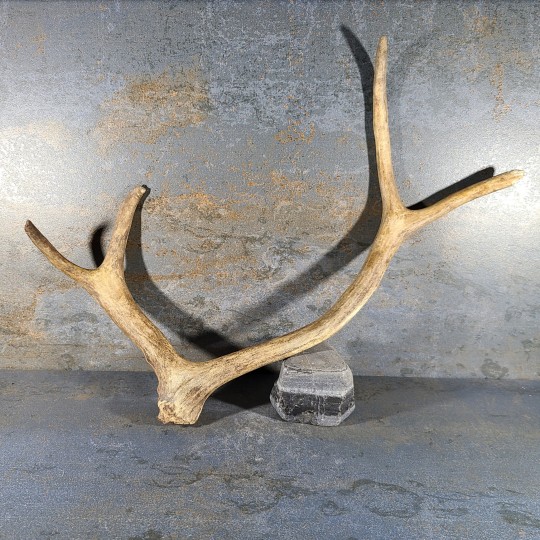
So now that weve met alot of the Mammals of the British Isles, how many do you think there are?
The answer according to the Mammal Society is 107!
Most of which are made up of species on the naughty list, which again is species you cannot hold without a licence. Infact there are 18 species of Bats listed and at least 30 Cetaceans reported in our waters!
We've talked about some Mammal being non native, invasive even but theres also some other vagrant species. Which include 4 species of Bat and 5 Pinnipeds (listed earlier) but also our only Marsupial. The Red Necked Wallaby, largely found in southern regions but as far north as Scotland there was also a, now believed to be extinct, population in the Peak District. Theres a large population on the Isle of Man however.
But there's also Raccoon and Reindeer in the UK too. Raccoon appear from illegal releases or escapes and in 2016 were banned from import into the country but a few sightings to pop up from time to time. Reindeer were native to the UK some 800 years ago until they were hunted to extinction, in the early 1950s a controlled but free roaming herd was introduced into the Cairngorms where there are about 150 individuals. With its near Arctic conditions the Cairgorms seems like a location more suited to them and thier specially adapted coats with hollow hairs and fur covered snoots. So a herd in the Costwolds might come as a suprise, these guys you can visit over the winter though.
27/04/24
#vulture culture uk#vulture culture#oddities#taxidermy#bones#skull#skull collecting#animal skull#curiosities#mammal week
7 notes
·
View notes
Photo

November 10th, 2024 Posted In: Garden Style & Living The best cottage garden plants have pretty blooms. They flower for a long time and are often fragrant. And above all, they are plants which grow well in your climate and soil.But there are no rules in cottage garden style. You can adopt a colour theme as Tim Pilgrim has in this contemporary cottage garden.Or you can grow a glorious patchwork of different flowers together.You can plan a cottage garden, but you don’t have to. You can let it evolve, experimenting over time. If you love to buy plants on impulse, then this style is perfect for you.So this is a list of the best cottage garden plants, with their pros and cons. They all have charming flowers, some are sweetly scented and they’re all perfect for pollinators. That’s not just bees but butterflies, moths and other insects.These plants grow in a wide range of climates and zones, so you’re likely to have a variety available to you.Firstly, decide whether you want a low maintenance cottage garden, a romantic ‘cottagecore’ haven or you’re prepared to spend time and effort on creating a classic cottage garden.What makes a garden a cottage garden?Cottage garden style is colourful and relaxed. It has informal plantings of flowers, fruit and vegetables. See what is cottage garden style and how to achieve it?The name derives from the idea that workers in cottages would use plants they could grow cheaply and easily. This can mean choosing native plants. It certainly means using plants that grow easily.Cottage gardens don’t need defined areas. Whereas English country garden style will have lawns, herbaceous borders and a separate ‘veg patch’, everything can be grown together in a cottage garden.A cottage garden doesn’t look designed. It evolves slowly, with vintage finds and thrifty hand-me-downs. Paths, pots, troughs, arches and other landscaping elements are recycled or upcycled. See A Rustic Cottage Garden on A Budget , Recycled Garden Ideas from RHS Chelsea and Eco-Friendly Garden Design for ideas.You could also use natural materials, such as stone or wood, for furniture and hardscaping elements.Recycled zinc bins and pavers with thrifty vintage garden furniture in Arit Anderson’s peat-free show garden at RHS Hampton CourtWhat are the most ‘cottagecore’ flowers?‘Cottagecore’ is a social media term. It stands for a simple, rustic life where you grow your own food, bake your own bread and make home-made clothes. It’s a lifestyle ideal around simplicity, sustainability and biodiversity.The hashtag #cottagecore on social media is associated with pretty cottages, romantic floral dresses and other picturesque rural elements such as keeping hens or ducks.All the plants in this post have charming ‘cottagecore’ flowers. But if you want to emphasize the ‘cottagecore’ ethos, combine flowers and veg growing and make sure your garden supports biodiversity.Find out which plants are native to your area, too, as these will support your local wildlife best.However, non-native plants can also support biodiversity, especially when weather patterns are unexpected. For example, some non-native plants flower earlier or later than your native plants. This helps pollinators if there is warm weather earlier or later than usual.So ‘grow native plants’ isn’t a ‘one size fits all’ rule.Old bricks, a pretty gate and ducks – elements of ‘cottagecore’ style.Asters (asters & symphyotrichum)Hardiness varies, but some down to minus 40C/minus 40F. Full sun or partial shade.Asters are daisy-like flowers in blue, pink, red, white or purple, perfect for the cottage garden look. Botanists have recently re-classified them into several different, unrelated species. But the common name for them all is still asters.‘Symphyotrichum’ asters are native to many parts of the Americas. Plants with the botanic name of ‘Aster’ are European, UK and Asian natives. There are other species too.If you want to focus on native plants, look up the asters that are native you where you are. Otherwise, both asters and symphyotrichum are pretty, easy-grow plants that flower for a long period from summer to the first frosts.They’re a good flower for pollinators at the end of the season when many other flowers are over.Aster amellus ‘King George’ has pretty blue flowers. It starts flowering in summer and goes on flowering until the first frosts.HoneysuckleHardiness varies, some down to minus 29C/minus 20F. Dappled or partial shade.A classic cottage garden climbing plant, but do your research before planting one! There are nearly 200 species of honeysuckle. Different varieties are native to north America, northern Europe or Asia.Some honeysuckle varieties may be invasive where you are, so check the name carefully. Some Asian honeysuckles can be very invasive in parts of the USA and Canada, for example. That means that they will spread too quickly, which will crowd out other plants. This can be damaging to biodiversity.However, there will be a honeysuckle for where you live.The honeysuckle fragrance is famous, but not all honeysuckles are scented. Check that too.And some honeysuckles will grow and grow. Unless you’re happy to prune back several times a year, check the eventual height and size.Honeysuckle comes in white, cream, yellow or gold. This yellow honeysuckle is native to North America, but grows well in the UK too.PoppiesThe seed of Common Poppies can survive very cold temperatures, such as minus 50C/minus 60F but they need the weather to warm up before they sprout and flower. Full sun or partial shade.Poppies are famous for popping up when the soil has been disturbed. If you dig a new bed, turning over the soil for the first time for years, you’re likely to get poppies the following summer.That’s why so many poppies appeared in the fields after World War 1. They germinated where the soil had been turned by tires or dug up in trenches.There are dozens of different types of poppy, all good for a cottage garden. But the best known is the Common Poppy (Papaver rhoeas), mainly available in scarlet and light purple/pink.They are particularly loved by pollinators. I often find two or three bees sharing one poppy flower.Grow Common Poppies from seed. You can either sow them in trays and plant them out or scatter the seed directly on the ground.Poppies self-seed well. They seem to prefer to self-seed – they want to decide where they will grow! Once you have them in your garden, they will dot themselves around.The common poppy grows every year from seed. The seed heads look good in winter.See this post for more self-seeding plants – all 20 are so pretty and perfect for a cottage garden.Low maintenance perennials for a cottage gardenIf you want low maintenance cottage garden plants, then choose shrubs and perennials. They need less work than annuals and bedding plants.Annuals are plants that grow from seed, flower and die in one year.Perennials are plants that live in your garden for three years or more. See perennials made simple for advice from Rosy Hardy of Hardy’s Cottage Garden Plants.And here are three top long-flowering, easy-care perennials for cottage gardens.Catmint (Nepeta)Very hardy – down to minus 40C/minus 40F. Full sun or partial shade.Drought resistant, deer and slug resistant, easy going, long flowering…this must be one of the easiest plants to grow. It flowers for weeks from mid-summer onwards. If you cut it back when the blooms fade, it will start flowering again. It grows in almost any soil, is loved by pollinators and comes in shades of blue, white or lavender.Nepeta is often recommended as an easier alternative to lavender. Lavender isn’t difficult to grow. However, nepeta will tolerate wet weather and lavender hates getting its feet wet.Catmint (nepeta) in the gardens in the famous West Dean Gardens in Sussex.Globe thistle (Echinops)Hardy down to minus 40C/minus 40F. Full sun.Another easy-growing plant which is drought-resistant, deer and slug resistant and with a long season of interest.The sculptural blue or white globe thistle flowers make this one of the best plants for pollinators. And when the blooms are over, they develop seedheads for the birds.Once established, globe thistle needs almost no care. Once the birds have enjoyed the seeds, the stems will slowly collapse over winter and can be cleared away easily in spring. New foliage will spring from the base.Globe thistle (Echinops) is a magnet for pollinators. And the birds will enjoy the seedheads in winter. A cottage garden plant with a long season of interest.Hardy geraniumsHardiness varies but some hardy down to minus 29C/minus 20F. Full sun, partial shade and some varieties full shade.Don’t be confused by the brightly coloured bedding plants labelled ‘geraniums’ for sale in garden centres in summer. Those are called pelargoniums. They won’t survive any freezing weather outside.But there are nearly 500 different varieties of hardy geranium. Some like full sun, others are perfect woodland ground cover plants. Many are drought resistant once established. Geranium macrorrhizum (Cranesbill) is even good in dry shade and difficult conditions under trees.They flower for months with blooms in pinks, reds, purple or white. They’re deer and rabbit-resistant.The only care hardy geraniums need is to be cut back once a year after flowering. Then they will often flower again.Hardy geraniums, such as ‘Anne Folkard’ can be sprawling plants or you can find low-growing ground cover varieties.When are cottage gardens high maintenance?A cottage garden generally has lots of different plants and flowers in it. This may mean that there are lots of different caring schedules – you’ll be pruning, feeding, watering or dead-heading at different times.Some people enjoy looking after their gardens, so ‘high maintenance’ isn’t always a bad thing. But if you want the cottage garden to be low maintenance, plant perennials, shrubs and trees.Annuals and vegetables are the high maintenance elements in a cottage garden.The following cottage gardens plants are delightfully pretty. But they are ‘high maintenance.’ This doesn’t mean they’re ‘difficult to grow’. It means they will need regular attention.Sweet peas (Lathyrus odoratus)Annuals (grown from seed every year) so can be grown in most temperate climates. Full sun in cooler climates, light shade in warmer places.Probably the most famous ‘cottage garden plant.’ But also the one that requires the most attention, sadly! The blooms are adorably pretty in colours such as pink , purple, blue or white. The scent is delightful and the fragrance from a vase of sweet peas will fill a room.You’ll need to train sweet peas up a support, water them, dead-head them constantly and protect them from rodents.None of these tasks are difficult, but it isn’t a plant that can be left to its own devices. If you want a low maintenance garden, then don’t plant sweet peas.Everlasting sweet peas are less work and come back every year, but they don’t have the fragrance.I know so few people who grow sweet peas that I only have a photo of them in a vase. They are the most beautiful, fragrant cottage garden plants, but they do need regular attention.LupinsThere are some very cold hardy lupins but many lupins you buy in garden centres won’t come back year after year. Full sun.Some experts suggest treating lupins as an annual or short-lived perennial, although the original cottage garden lupins were both cold hardy and long-lived. But the gorgeous new cultivars are less likely to survive over winter in your garden.In the UK, the milder winters mean that lupins may survive, but gardeners often report disappointment. They are also prone to slug damage.They are stunningly beautiful cottage garden staples in blues, yellows, reds, purples or white.Lupins are classic cottage garden plants. Their spikes add fireworks to any border, but they do need more care than many other border plants.TulipsTulips grow best in areas with cold winters and can survive down to minus 40C/minus 40F. However if you have hot summers and mild winters, then tulips may not grow as well. Full sun or part shade.Tulips have all the gorgeous drama that makes a cottage garden.But in many gardens, they don’t come back year after year. And Head Gardener Neil Miller of Hever Castle says that tulips flower best in their first year. Read his advice on growing tulips here.My garden is full of odd tulips in different sizes and colours. That’s because I planted a group of them in a certain colour scheme, and just one remains. Then I planted a different colour scheme another year. And only one or two of those survived. It looks pretty and cottagey, but if you want a particular effect, it’s best to grow your tulips from new every year.They’re easy to grow in pots. But they don’t reliably come back in borders. Tulips may get tulip fire after a very wet winter or spring.These mixed tulips in my lawn are pretty, but they are all different sizes and colours. Tulips don’t come back reliably, so these are the remnants of several planting schemes over the years!Delphiniums (sometimes called larkspur, although true larkspur is different)Hardiness varies but some down to minus 40C/minus 40F. Full sun.Delphinium blooms are vibrant spires in purple, red, blue or white. They are probably the most striking and gorgeous flowers for any cottage or ‘English country’ garden.But they need looking after. They need feeding, staking and protecting from slugs. They don’t want too much competition. They need enough water, but not too much.None of this is difficult but you can’t just plant delphiniums and leave them to get on with it. You need to look after them on an almost daily basis.Any list of cottage garden plants will include delphiniums, such as this blue delphinium at Doddington Place Gardens. They are gorgeous but they are not low maintenance.Best cottage gardens bulbs & tubersDaffodils/narcissiHardy down to minus 20C/minus 4F. Not suitable for climates with hot summers and mild winters. Full sun or partial shade.Daffodils, also called narcissi, are probably the easiest bulbs to grow. Many of them will spread and they come back year after year.Plant them in a lawn for a romantic cottage garden look. But remember that you won’t be able to mow the lawn until six weeks after the flowers have faded.All bulbs need about six weeks of sun on their leaves in order to make their flowers for next year. So if you mow too soon, you will lose next year’s blooms.There’s more about growing and choosing daffodils here.One good place to plant them is under trees and shrubs that lose their leaves in winter. By the time the leaves are back, the daffodil will be almost ready to go dormant again. See where to plant bulbs.Daffodils are the easiest bulbs to grow. They come back reliably year after year and even spread. These were planted over 30 years ago, so I don’t know their name!AlliumsHardiness varies but some down to minus 40C/minus 40F. Full sun or light shade.Alliums have striking blue, white or purple pom-pom blooms. These add punctuation points to a cottage garden border. In some places, they’ll self-seed easily, popping up in unexpected places. Another very popular flower for pollinators.Deer, rabbits, squirrels and voles don’t like the taste of onion. Alliums are the decorative side of the onion family, so pests leave them alone. Super easy and very resilient, alliums flower in early summer. The seed heads offer sculptural interest for several months afterwards. The foliage dies away by mid-summer.Alliums (this is ‘Purple Sensation’) keep their distinctive shapes after the flower colour has gone. So they are a presence in the garden for around three months from early summer.Alstromerias (also known as alstroemerias)Hardiness varies, some down to minus 10C/14F. Full sun or light shade.Easy to grow and long flowering. See alstromeria grower Ben Cross’s advice in how to grow alstromerias for endless flowers. The red and orange blooms are taller – if you want the more delicate shades, they’ll be shorter. Plant in the front of a border.Alstromerias can spread too vigorously in some areas. If they’re invasive in your area, they grow well in pots.They are very good flowers for the vase but always twist and pull the stem out. Never cut an alstromeria!Best cottage garden shrubsLavenderHardiness varies but most ‘English lavender’ hardy down to minus 28C/minus 20F. Full sun.Lavender loves sunlight. It’s a Mediterranean plant but ‘English lavender’ will grow well in colder climates, as long as they are fairly dry. It’s another pollinator magnet and has magnificent fragrance.You can get lavender in several shades of blue and purple, and also white.I had bushes of Lavender ‘Munstead’ in the garden for 15 years. They only needed cutting back once a year, after flowering. Otherwise they were almost maintenance free. I cut my lavender back much harder than many people advise. It keeps it in good shape. See The Absolutely Best Way to Prune Lavender.My lavender ‘Munstead’. It flowers in summer, after which we cut it into neat mounds.RosesHardiness varies but many hardy down to minus 28C/minus 20F. Full sun, partial shade and a few grow in shade.Roses are the most famous cottage garden plant of all. You can grow roses round arches, arbours and pergolas. You can grow them in pots. And you can grow them in a mixed border.Some roses have fragrance and others do not. If the blooms have an open centre, they’re good for pollinators. But the double-flowered ones are less beneficial.There are more than thirty thousand different varieties of roses. You can find roses for very cold climates and roses for hotter climates. But you’ll get the biggest choice of roses if your winters are no colder than minus 28C/minus 20F and your summers average below 30C/100F.Roses can be low maintenance or high maintenance, depending on what you want. If you insist on perfect blooms without black spot on the leaf or aphids, then you will have to keep fussing over them.However, if you accept imperfection, you can enjoy beautiful roses in your garden without too much work. They will need fertilising once or twice a year and will flower best if you deadhead them regularly. See how to grow roses and how to choose roses for an obelisk, arch, fence or pergola.The archetypal cottage garden flower – roses! Here at the Peter Beales rose garden in Norfolk, there are roses on arbours, arches, fences and obelisks, as well as in borders and climbing up walls. Roses mix well with other cottage garden plants, such as foxgloves.HydrangeasHardiness varies, generally down to minus 28C/minus 20F. Also some down to minus 40C/minus 40F. Shade or partial shade.Hydrangeas are easy-going plants that grow well in shade. Some varieties are good for pollinators but the ‘mop head’ varieties (with a round flower) don’t offer pollen or nectar. If you want pollinator-friendly hydrangeas, check the variety before buying.Hydrangeas flower from mid to late summer. Then their flowers slowly dry on the stem and turn into autumn shades of brown and cream. Some hydrangeas, such as ‘Annabelle’, stay sculptural all through the winter and look magnificent with frost on them. So these plants offer a long season of interest.See everything you need to know about growing hydrangeas.Hydrangeas are very easy-care. They need watering in dry summers, but otherwise all they need is to be pruned once a year in spring. Not all hydrangeas are wildlife friendly, but this hydrangea flower is called ‘lace-cap’ and offers benefits to pollinators.Best cottage garden perennialsMonarda (bee balm)Hardiness varies, some down to minus 40C/minus 40F. Full sun or partial shade.Another easy-care, deer resistant plant although it can get some slug and snail damage. Popular with pollinators such as butterflies, bees and hummingbirds. The striking spidery blooms come in brilliant, jewel red, pin or purple and also white.Monardas won’t like long droughts or boggy conditions.The unusual spidery flower of monarda (bee balm) attracts bees and hummingbirds.Verbena bonariensis (tall verbena)If your winters go below minus 17C/0F, then you’ll need to grow verbena bonariensis as an annual. Full sun.Butterflies and bees both adore the purple flowers and birds love the seeds. A tall ‘see-through’ plant with slender stems and blooms which last from mid-late summer to the first frosts. Best planted in clumps – you’ll hardly be able to see just one verbena bonariensis.Verbena bonariensis is generally considered slug-resistant, deer resistant and easy care. You can leave the flowers to turn into winter seed heads for the birds and they look good in frost.Verbena bonariensis is a short-lived perennial. If you have colder winters, you will probably need to grow it as an annual. A clump of verbena bonariensis creates a mass of see-through stems topped by a cloud of purple.Sedum/stonecrop (now hylotelephium)Hardiness varies but some hardy down to minus 40C/minus 40F. Full sun or light shadeSedum (now hylotelephium) is one of the 10 resilient plants in 10 beautiful but tough perennials which will survive both too wet and too dry summers.I find Sedum ‘Autumn Joy’ to be extra-ordinarily resilient. It can get nibbled by slugs. But I picked up a stem that had been nibbled by a slug and put it into a vase. I forgot about it and two months later, I realised it had grown roots. So I planted it in the soil. It’s grown into a proper plant!And when you look at ‘Autumn Joy’ in bloom, you will see the flowers are crowded with pollinators of lots of different types and sizes, all enjoying the nectar.Sedum (now hylotelephium) ‘Autumn Joy’ is on the bottom right of this photo. A superbly resilient plant for late summer and autumn/fall. Adored by pollinators.Best cottage garden annuals & biennialsAnnuals grow from seed every year so you don’t always need to know about hardiness.Biennials grow from seed, flower, set seed and die over two years.Many people plant their annuals from seed in the autumn/fall so that their plants have a head start the following summer. If you’re doing this, you’ll need to check whether you can plant them outside over the winter.You can also grow the seedlings in a greenhouse or potting shed until spring comes. When temperatures and light levels are low, plants don’t grow much.Annuals and biennials have lots of flowers and come in a wonderful range of colours. They’re perfect for filling gaps or creating a gorgeous display. But they are more work. You have to sow the seed and/or plant the seedlings. Then you may have to support them, feed, water and deadhead them, then clear them away at the end of summer.CosmosFull sun or partial shade.One of the prettiest and most popular cottage garden annuals. I find them easy to grow. One warning, however! Don’t give them extra fertilizer!Most plants flower more if you fertilize them. But cosmos will grow green and bushy, then fail to flower.Cosmos are available in various shades of pink, yellow and cream, along with white. Perfect cottage garden blooms!Hollyhocks (can be annual or biennial)Full sun.A classic cottage garden flower. It’s tall and vigorous with blooms in white, pink or cream. Hollyhocks can sometimes have a mind of their own. Gardeners have often told me that they’ve struggled to grow hollyhocks. Then suddenly hollyhocks start to spring up on their driveway or in the cracks of pavers.You can get single flowered hollyhocks and double-flowered ones. Only the single flowered ones benefit pollinators.They can grow to 6ft/2m tall so may need staking.A hollyhock in the Abbey Physic Garden in Faversham. The soft colours and frilly flowers make it a beautifully romantic cottage garden plant.Cleome (Spider flowers)Full sun or light shadeCleomes aren’t as well known as cosmos or hollyhocks, but they are striking, pollinator-friendly flowers. They have spidery blooms in deep pink, pale pink or white.Although cleomes are tall (3ft/1m), they are upright and don’t usually need supports. It doesn’t need fertilizer and can be very drought-resistant. Resistant to most pests and diseases.Cleomes and salvias in the Savill Garden near Windsor. The cleomes are the taller, spidery flowers. They’re long-lasting and dramatic.Foxgloves (biennial)Partial shadeFoxgloves have spires of flowers in white, pink, purple, white or cream in early summer.They’re toxic to both humans and pets, so if you are worried about either nibbling plants in your garden, then don’t plant them. Most pets know what to nibble though. See how to puppy-proof your garden.Foxgloves often self-seed easily and need very little attention. If you cut the first big spire of flowers off when it is over, you should be rewarded by a spray of smaller spires.Foxgloves are another popular cottage garden plant. The spires add spikes of colour in early summer. They are toxic so be careful around children and pets.Best cottage garden plants for warmer climatesMost of the plants in this post will grow well in warmer climates, but some will not like temperatures that are regularly above 30C/100F or never freeze. If you don’t need a winter coat and spend most of your life in a T shirt instead of a sweater, you probably won’t be able to grow tulips, daffodils, delphiniums or hydrangeas!However, some popular cottage garden plants grow as perennials in warmer climates and are re-planted annually in cooler climates. Mix them with local native plants as Bill Bampton of The Diggers Club does in Cottage Garden Mash-up – how to adapt English cottage garden style to your own climate.SalviaFull sun or partial shadeSalvias come from Mexico and grow well in climates which rarely freeze in winter. They can tolerate hot summers and drought.However, if you see a salvia growing in the UK, you’ll see lots of bees enjoying the nectar. They’re proof that non-native flowers can be valuable to wildlife.There are 900 different types of salvia in a very wide range of different colours. There are some vivid pinks and purples, pastel pinks and creams plus bi-coloured salvias.Read the UK’s top expert on growing salvias here. Those in cooler climates will probably have to replant salvias every year. But they flower for months at a time. See 18 long flowering perennials that bloom from summer until the first frost.Plants such as rosemary and sage have recently been re-classified as salvias. They are perfect cottage garden herbs.Salvias are quite tender and if your winters freeze regularly you will either have to lift and store them or plant again from new. But they are amongst the longest-flowering perennials and perfect for a cottage garden.Best cottage garden treesEvery cottage garden should have a fruit tree! You may want to choose something unusual, such as a quince or a medlar tree. A native fruit tree is always a good choice.But a simple apple or crab apple tree will give you flowers in spring and fruit in autumn/fall. You can enjoy this or share it with wildlife by leaving it on the tree.See An Orchard in Your Garden for tips on growing fruit trees in a small garden.Crab apple trees on either side of a vintage gate. These are Malus hupehensis and birds adore the tiny red fruits at the end of summer.Pin to remember the best cottage garden plantsAnd do join us. See here for a free weekly email with more gardening tips, ideas and inspiration. Source link
2 notes
·
View notes
Photo

November 10th, 2024 Posted In: Garden Style & Living The best cottage garden plants have pretty blooms. They flower for a long time and are often fragrant. And above all, they are plants which grow well in your climate and soil.But there are no rules in cottage garden style. You can adopt a colour theme as Tim Pilgrim has in this contemporary cottage garden.Or you can grow a glorious patchwork of different flowers together.You can plan a cottage garden, but you don’t have to. You can let it evolve, experimenting over time. If you love to buy plants on impulse, then this style is perfect for you.So this is a list of the best cottage garden plants, with their pros and cons. They all have charming flowers, some are sweetly scented and they’re all perfect for pollinators. That’s not just bees but butterflies, moths and other insects.These plants grow in a wide range of climates and zones, so you’re likely to have a variety available to you.Firstly, decide whether you want a low maintenance cottage garden, a romantic ‘cottagecore’ haven or you’re prepared to spend time and effort on creating a classic cottage garden.What makes a garden a cottage garden?Cottage garden style is colourful and relaxed. It has informal plantings of flowers, fruit and vegetables. See what is cottage garden style and how to achieve it?The name derives from the idea that workers in cottages would use plants they could grow cheaply and easily. This can mean choosing native plants. It certainly means using plants that grow easily.Cottage gardens don’t need defined areas. Whereas English country garden style will have lawns, herbaceous borders and a separate ‘veg patch’, everything can be grown together in a cottage garden.A cottage garden doesn’t look designed. It evolves slowly, with vintage finds and thrifty hand-me-downs. Paths, pots, troughs, arches and other landscaping elements are recycled or upcycled. See A Rustic Cottage Garden on A Budget , Recycled Garden Ideas from RHS Chelsea and Eco-Friendly Garden Design for ideas.You could also use natural materials, such as stone or wood, for furniture and hardscaping elements.Recycled zinc bins and pavers with thrifty vintage garden furniture in Arit Anderson’s peat-free show garden at RHS Hampton CourtWhat are the most ‘cottagecore’ flowers?‘Cottagecore’ is a social media term. It stands for a simple, rustic life where you grow your own food, bake your own bread and make home-made clothes. It’s a lifestyle ideal around simplicity, sustainability and biodiversity.The hashtag #cottagecore on social media is associated with pretty cottages, romantic floral dresses and other picturesque rural elements such as keeping hens or ducks.All the plants in this post have charming ‘cottagecore’ flowers. But if you want to emphasize the ‘cottagecore’ ethos, combine flowers and veg growing and make sure your garden supports biodiversity.Find out which plants are native to your area, too, as these will support your local wildlife best.However, non-native plants can also support biodiversity, especially when weather patterns are unexpected. For example, some non-native plants flower earlier or later than your native plants. This helps pollinators if there is warm weather earlier or later than usual.So ‘grow native plants’ isn’t a ‘one size fits all’ rule.Old bricks, a pretty gate and ducks – elements of ‘cottagecore’ style.Asters (asters & symphyotrichum)Hardiness varies, but some down to minus 40C/minus 40F. Full sun or partial shade.Asters are daisy-like flowers in blue, pink, red, white or purple, perfect for the cottage garden look. Botanists have recently re-classified them into several different, unrelated species. But the common name for them all is still asters.‘Symphyotrichum’ asters are native to many parts of the Americas. Plants with the botanic name of ‘Aster’ are European, UK and Asian natives. There are other species too.If you want to focus on native plants, look up the asters that are native you where you are. Otherwise, both asters and symphyotrichum are pretty, easy-grow plants that flower for a long period from summer to the first frosts.They’re a good flower for pollinators at the end of the season when many other flowers are over.Aster amellus ‘King George’ has pretty blue flowers. It starts flowering in summer and goes on flowering until the first frosts.HoneysuckleHardiness varies, some down to minus 29C/minus 20F. Dappled or partial shade.A classic cottage garden climbing plant, but do your research before planting one! There are nearly 200 species of honeysuckle. Different varieties are native to north America, northern Europe or Asia.Some honeysuckle varieties may be invasive where you are, so check the name carefully. Some Asian honeysuckles can be very invasive in parts of the USA and Canada, for example. That means that they will spread too quickly, which will crowd out other plants. This can be damaging to biodiversity.However, there will be a honeysuckle for where you live.The honeysuckle fragrance is famous, but not all honeysuckles are scented. Check that too.And some honeysuckles will grow and grow. Unless you’re happy to prune back several times a year, check the eventual height and size.Honeysuckle comes in white, cream, yellow or gold. This yellow honeysuckle is native to North America, but grows well in the UK too.PoppiesThe seed of Common Poppies can survive very cold temperatures, such as minus 50C/minus 60F but they need the weather to warm up before they sprout and flower. Full sun or partial shade.Poppies are famous for popping up when the soil has been disturbed. If you dig a new bed, turning over the soil for the first time for years, you’re likely to get poppies the following summer.That’s why so many poppies appeared in the fields after World War 1. They germinated where the soil had been turned by tires or dug up in trenches.There are dozens of different types of poppy, all good for a cottage garden. But the best known is the Common Poppy (Papaver rhoeas), mainly available in scarlet and light purple/pink.They are particularly loved by pollinators. I often find two or three bees sharing one poppy flower.Grow Common Poppies from seed. You can either sow them in trays and plant them out or scatter the seed directly on the ground.Poppies self-seed well. They seem to prefer to self-seed – they want to decide where they will grow! Once you have them in your garden, they will dot themselves around.The common poppy grows every year from seed. The seed heads look good in winter.See this post for more self-seeding plants – all 20 are so pretty and perfect for a cottage garden.Low maintenance perennials for a cottage gardenIf you want low maintenance cottage garden plants, then choose shrubs and perennials. They need less work than annuals and bedding plants.Annuals are plants that grow from seed, flower and die in one year.Perennials are plants that live in your garden for three years or more. See perennials made simple for advice from Rosy Hardy of Hardy’s Cottage Garden Plants.And here are three top long-flowering, easy-care perennials for cottage gardens.Catmint (Nepeta)Very hardy – down to minus 40C/minus 40F. Full sun or partial shade.Drought resistant, deer and slug resistant, easy going, long flowering…this must be one of the easiest plants to grow. It flowers for weeks from mid-summer onwards. If you cut it back when the blooms fade, it will start flowering again. It grows in almost any soil, is loved by pollinators and comes in shades of blue, white or lavender.Nepeta is often recommended as an easier alternative to lavender. Lavender isn’t difficult to grow. However, nepeta will tolerate wet weather and lavender hates getting its feet wet.Catmint (nepeta) in the gardens in the famous West Dean Gardens in Sussex.Globe thistle (Echinops)Hardy down to minus 40C/minus 40F. Full sun.Another easy-growing plant which is drought-resistant, deer and slug resistant and with a long season of interest.The sculptural blue or white globe thistle flowers make this one of the best plants for pollinators. And when the blooms are over, they develop seedheads for the birds.Once established, globe thistle needs almost no care. Once the birds have enjoyed the seeds, the stems will slowly collapse over winter and can be cleared away easily in spring. New foliage will spring from the base.Globe thistle (Echinops) is a magnet for pollinators. And the birds will enjoy the seedheads in winter. A cottage garden plant with a long season of interest.Hardy geraniumsHardiness varies but some hardy down to minus 29C/minus 20F. Full sun, partial shade and some varieties full shade.Don’t be confused by the brightly coloured bedding plants labelled ‘geraniums’ for sale in garden centres in summer. Those are called pelargoniums. They won’t survive any freezing weather outside.But there are nearly 500 different varieties of hardy geranium. Some like full sun, others are perfect woodland ground cover plants. Many are drought resistant once established. Geranium macrorrhizum (Cranesbill) is even good in dry shade and difficult conditions under trees.They flower for months with blooms in pinks, reds, purple or white. They’re deer and rabbit-resistant.The only care hardy geraniums need is to be cut back once a year after flowering. Then they will often flower again.Hardy geraniums, such as ‘Anne Folkard’ can be sprawling plants or you can find low-growing ground cover varieties.When are cottage gardens high maintenance?A cottage garden generally has lots of different plants and flowers in it. This may mean that there are lots of different caring schedules – you’ll be pruning, feeding, watering or dead-heading at different times.Some people enjoy looking after their gardens, so ‘high maintenance’ isn’t always a bad thing. But if you want the cottage garden to be low maintenance, plant perennials, shrubs and trees.Annuals and vegetables are the high maintenance elements in a cottage garden.The following cottage gardens plants are delightfully pretty. But they are ‘high maintenance.’ This doesn’t mean they’re ‘difficult to grow’. It means they will need regular attention.Sweet peas (Lathyrus odoratus)Annuals (grown from seed every year) so can be grown in most temperate climates. Full sun in cooler climates, light shade in warmer places.Probably the most famous ‘cottage garden plant.’ But also the one that requires the most attention, sadly! The blooms are adorably pretty in colours such as pink , purple, blue or white. The scent is delightful and the fragrance from a vase of sweet peas will fill a room.You’ll need to train sweet peas up a support, water them, dead-head them constantly and protect them from rodents.None of these tasks are difficult, but it isn’t a plant that can be left to its own devices. If you want a low maintenance garden, then don’t plant sweet peas.Everlasting sweet peas are less work and come back every year, but they don’t have the fragrance.I know so few people who grow sweet peas that I only have a photo of them in a vase. They are the most beautiful, fragrant cottage garden plants, but they do need regular attention.LupinsThere are some very cold hardy lupins but many lupins you buy in garden centres won’t come back year after year. Full sun.Some experts suggest treating lupins as an annual or short-lived perennial, although the original cottage garden lupins were both cold hardy and long-lived. But the gorgeous new cultivars are less likely to survive over winter in your garden.In the UK, the milder winters mean that lupins may survive, but gardeners often report disappointment. They are also prone to slug damage.They are stunningly beautiful cottage garden staples in blues, yellows, reds, purples or white.Lupins are classic cottage garden plants. Their spikes add fireworks to any border, but they do need more care than many other border plants.TulipsTulips grow best in areas with cold winters and can survive down to minus 40C/minus 40F. However if you have hot summers and mild winters, then tulips may not grow as well. Full sun or part shade.Tulips have all the gorgeous drama that makes a cottage garden.But in many gardens, they don’t come back year after year. And Head Gardener Neil Miller of Hever Castle says that tulips flower best in their first year. Read his advice on growing tulips here.My garden is full of odd tulips in different sizes and colours. That’s because I planted a group of them in a certain colour scheme, and just one remains. Then I planted a different colour scheme another year. And only one or two of those survived. It looks pretty and cottagey, but if you want a particular effect, it’s best to grow your tulips from new every year.They’re easy to grow in pots. But they don’t reliably come back in borders. Tulips may get tulip fire after a very wet winter or spring.These mixed tulips in my lawn are pretty, but they are all different sizes and colours. Tulips don’t come back reliably, so these are the remnants of several planting schemes over the years!Delphiniums (sometimes called larkspur, although true larkspur is different)Hardiness varies but some down to minus 40C/minus 40F. Full sun.Delphinium blooms are vibrant spires in purple, red, blue or white. They are probably the most striking and gorgeous flowers for any cottage or ‘English country’ garden.But they need looking after. They need feeding, staking and protecting from slugs. They don’t want too much competition. They need enough water, but not too much.None of this is difficult but you can’t just plant delphiniums and leave them to get on with it. You need to look after them on an almost daily basis.Any list of cottage garden plants will include delphiniums, such as this blue delphinium at Doddington Place Gardens. They are gorgeous but they are not low maintenance.Best cottage gardens bulbs & tubersDaffodils/narcissiHardy down to minus 20C/minus 4F. Not suitable for climates with hot summers and mild winters. Full sun or partial shade.Daffodils, also called narcissi, are probably the easiest bulbs to grow. Many of them will spread and they come back year after year.Plant them in a lawn for a romantic cottage garden look. But remember that you won’t be able to mow the lawn until six weeks after the flowers have faded.All bulbs need about six weeks of sun on their leaves in order to make their flowers for next year. So if you mow too soon, you will lose next year’s blooms.There’s more about growing and choosing daffodils here.One good place to plant them is under trees and shrubs that lose their leaves in winter. By the time the leaves are back, the daffodil will be almost ready to go dormant again. See where to plant bulbs.Daffodils are the easiest bulbs to grow. They come back reliably year after year and even spread. These were planted over 30 years ago, so I don’t know their name!AlliumsHardiness varies but some down to minus 40C/minus 40F. Full sun or light shade.Alliums have striking blue, white or purple pom-pom blooms. These add punctuation points to a cottage garden border. In some places, they’ll self-seed easily, popping up in unexpected places. Another very popular flower for pollinators.Deer, rabbits, squirrels and voles don’t like the taste of onion. Alliums are the decorative side of the onion family, so pests leave them alone. Super easy and very resilient, alliums flower in early summer. The seed heads offer sculptural interest for several months afterwards. The foliage dies away by mid-summer.Alliums (this is ‘Purple Sensation’) keep their distinctive shapes after the flower colour has gone. So they are a presence in the garden for around three months from early summer.Alstromerias (also known as alstroemerias)Hardiness varies, some down to minus 10C/14F. Full sun or light shade.Easy to grow and long flowering. See alstromeria grower Ben Cross’s advice in how to grow alstromerias for endless flowers. The red and orange blooms are taller – if you want the more delicate shades, they’ll be shorter. Plant in the front of a border.Alstromerias can spread too vigorously in some areas. If they’re invasive in your area, they grow well in pots.They are very good flowers for the vase but always twist and pull the stem out. Never cut an alstromeria!Best cottage garden shrubsLavenderHardiness varies but most ‘English lavender’ hardy down to minus 28C/minus 20F. Full sun.Lavender loves sunlight. It’s a Mediterranean plant but ‘English lavender’ will grow well in colder climates, as long as they are fairly dry. It’s another pollinator magnet and has magnificent fragrance.You can get lavender in several shades of blue and purple, and also white.I had bushes of Lavender ‘Munstead’ in the garden for 15 years. They only needed cutting back once a year, after flowering. Otherwise they were almost maintenance free. I cut my lavender back much harder than many people advise. It keeps it in good shape. See The Absolutely Best Way to Prune Lavender.My lavender ‘Munstead’. It flowers in summer, after which we cut it into neat mounds.RosesHardiness varies but many hardy down to minus 28C/minus 20F. Full sun, partial shade and a few grow in shade.Roses are the most famous cottage garden plant of all. You can grow roses round arches, arbours and pergolas. You can grow them in pots. And you can grow them in a mixed border.Some roses have fragrance and others do not. If the blooms have an open centre, they’re good for pollinators. But the double-flowered ones are less beneficial.There are more than thirty thousand different varieties of roses. You can find roses for very cold climates and roses for hotter climates. But you’ll get the biggest choice of roses if your winters are no colder than minus 28C/minus 20F and your summers average below 30C/100F.Roses can be low maintenance or high maintenance, depending on what you want. If you insist on perfect blooms without black spot on the leaf or aphids, then you will have to keep fussing over them.However, if you accept imperfection, you can enjoy beautiful roses in your garden without too much work. They will need fertilising once or twice a year and will flower best if you deadhead them regularly. See how to grow roses and how to choose roses for an obelisk, arch, fence or pergola.The archetypal cottage garden flower – roses! Here at the Peter Beales rose garden in Norfolk, there are roses on arbours, arches, fences and obelisks, as well as in borders and climbing up walls. Roses mix well with other cottage garden plants, such as foxgloves.HydrangeasHardiness varies, generally down to minus 28C/minus 20F. Also some down to minus 40C/minus 40F. Shade or partial shade.Hydrangeas are easy-going plants that grow well in shade. Some varieties are good for pollinators but the ‘mop head’ varieties (with a round flower) don’t offer pollen or nectar. If you want pollinator-friendly hydrangeas, check the variety before buying.Hydrangeas flower from mid to late summer. Then their flowers slowly dry on the stem and turn into autumn shades of brown and cream. Some hydrangeas, such as ‘Annabelle’, stay sculptural all through the winter and look magnificent with frost on them. So these plants offer a long season of interest.See everything you need to know about growing hydrangeas.Hydrangeas are very easy-care. They need watering in dry summers, but otherwise all they need is to be pruned once a year in spring. Not all hydrangeas are wildlife friendly, but this hydrangea flower is called ‘lace-cap’ and offers benefits to pollinators.Best cottage garden perennialsMonarda (bee balm)Hardiness varies, some down to minus 40C/minus 40F. Full sun or partial shade.Another easy-care, deer resistant plant although it can get some slug and snail damage. Popular with pollinators such as butterflies, bees and hummingbirds. The striking spidery blooms come in brilliant, jewel red, pin or purple and also white.Monardas won’t like long droughts or boggy conditions.The unusual spidery flower of monarda (bee balm) attracts bees and hummingbirds.Verbena bonariensis (tall verbena)If your winters go below minus 17C/0F, then you’ll need to grow verbena bonariensis as an annual. Full sun.Butterflies and bees both adore the purple flowers and birds love the seeds. A tall ‘see-through’ plant with slender stems and blooms which last from mid-late summer to the first frosts. Best planted in clumps – you’ll hardly be able to see just one verbena bonariensis.Verbena bonariensis is generally considered slug-resistant, deer resistant and easy care. You can leave the flowers to turn into winter seed heads for the birds and they look good in frost.Verbena bonariensis is a short-lived perennial. If you have colder winters, you will probably need to grow it as an annual. A clump of verbena bonariensis creates a mass of see-through stems topped by a cloud of purple.Sedum/stonecrop (now hylotelephium)Hardiness varies but some hardy down to minus 40C/minus 40F. Full sun or light shadeSedum (now hylotelephium) is one of the 10 resilient plants in 10 beautiful but tough perennials which will survive both too wet and too dry summers.I find Sedum ‘Autumn Joy’ to be extra-ordinarily resilient. It can get nibbled by slugs. But I picked up a stem that had been nibbled by a slug and put it into a vase. I forgot about it and two months later, I realised it had grown roots. So I planted it in the soil. It’s grown into a proper plant!And when you look at ‘Autumn Joy’ in bloom, you will see the flowers are crowded with pollinators of lots of different types and sizes, all enjoying the nectar.Sedum (now hylotelephium) ‘Autumn Joy’ is on the bottom right of this photo. A superbly resilient plant for late summer and autumn/fall. Adored by pollinators.Best cottage garden annuals & biennialsAnnuals grow from seed every year so you don’t always need to know about hardiness.Biennials grow from seed, flower, set seed and die over two years.Many people plant their annuals from seed in the autumn/fall so that their plants have a head start the following summer. If you’re doing this, you’ll need to check whether you can plant them outside over the winter.You can also grow the seedlings in a greenhouse or potting shed until spring comes. When temperatures and light levels are low, plants don’t grow much.Annuals and biennials have lots of flowers and come in a wonderful range of colours. They’re perfect for filling gaps or creating a gorgeous display. But they are more work. You have to sow the seed and/or plant the seedlings. Then you may have to support them, feed, water and deadhead them, then clear them away at the end of summer.CosmosFull sun or partial shade.One of the prettiest and most popular cottage garden annuals. I find them easy to grow. One warning, however! Don’t give them extra fertilizer!Most plants flower more if you fertilize them. But cosmos will grow green and bushy, then fail to flower.Cosmos are available in various shades of pink, yellow and cream, along with white. Perfect cottage garden blooms!Hollyhocks (can be annual or biennial)Full sun.A classic cottage garden flower. It’s tall and vigorous with blooms in white, pink or cream. Hollyhocks can sometimes have a mind of their own. Gardeners have often told me that they’ve struggled to grow hollyhocks. Then suddenly hollyhocks start to spring up on their driveway or in the cracks of pavers.You can get single flowered hollyhocks and double-flowered ones. Only the single flowered ones benefit pollinators.They can grow to 6ft/2m tall so may need staking.A hollyhock in the Abbey Physic Garden in Faversham. The soft colours and frilly flowers make it a beautifully romantic cottage garden plant.Cleome (Spider flowers)Full sun or light shadeCleomes aren’t as well known as cosmos or hollyhocks, but they are striking, pollinator-friendly flowers. They have spidery blooms in deep pink, pale pink or white.Although cleomes are tall (3ft/1m), they are upright and don’t usually need supports. It doesn’t need fertilizer and can be very drought-resistant. Resistant to most pests and diseases.Cleomes and salvias in the Savill Garden near Windsor. The cleomes are the taller, spidery flowers. They’re long-lasting and dramatic.Foxgloves (biennial)Partial shadeFoxgloves have spires of flowers in white, pink, purple, white or cream in early summer.They’re toxic to both humans and pets, so if you are worried about either nibbling plants in your garden, then don’t plant them. Most pets know what to nibble though. See how to puppy-proof your garden.Foxgloves often self-seed easily and need very little attention. If you cut the first big spire of flowers off when it is over, you should be rewarded by a spray of smaller spires.Foxgloves are another popular cottage garden plant. The spires add spikes of colour in early summer. They are toxic so be careful around children and pets.Best cottage garden plants for warmer climatesMost of the plants in this post will grow well in warmer climates, but some will not like temperatures that are regularly above 30C/100F or never freeze. If you don’t need a winter coat and spend most of your life in a T shirt instead of a sweater, you probably won’t be able to grow tulips, daffodils, delphiniums or hydrangeas!However, some popular cottage garden plants grow as perennials in warmer climates and are re-planted annually in cooler climates. Mix them with local native plants as Bill Bampton of The Diggers Club does in Cottage Garden Mash-up – how to adapt English cottage garden style to your own climate.SalviaFull sun or partial shadeSalvias come from Mexico and grow well in climates which rarely freeze in winter. They can tolerate hot summers and drought.However, if you see a salvia growing in the UK, you’ll see lots of bees enjoying the nectar. They’re proof that non-native flowers can be valuable to wildlife.There are 900 different types of salvia in a very wide range of different colours. There are some vivid pinks and purples, pastel pinks and creams plus bi-coloured salvias.Read the UK’s top expert on growing salvias here. Those in cooler climates will probably have to replant salvias every year. But they flower for months at a time. See 18 long flowering perennials that bloom from summer until the first frost.Plants such as rosemary and sage have recently been re-classified as salvias. They are perfect cottage garden herbs.Salvias are quite tender and if your winters freeze regularly you will either have to lift and store them or plant again from new. But they are amongst the longest-flowering perennials and perfect for a cottage garden.Best cottage garden treesEvery cottage garden should have a fruit tree! You may want to choose something unusual, such as a quince or a medlar tree. A native fruit tree is always a good choice.But a simple apple or crab apple tree will give you flowers in spring and fruit in autumn/fall. You can enjoy this or share it with wildlife by leaving it on the tree.See An Orchard in Your Garden for tips on growing fruit trees in a small garden.Crab apple trees on either side of a vintage gate. These are Malus hupehensis and birds adore the tiny red fruits at the end of summer.Pin to remember the best cottage garden plantsAnd do join us. See here for a free weekly email with more gardening tips, ideas and inspiration. Source link
2 notes
·
View notes
Photo

November 10th, 2024 Posted In: Garden Style & Living The best cottage garden plants have pretty blooms. They flower for a long time and are often fragrant. And above all, they are plants which grow well in your climate and soil.But there are no rules in cottage garden style. You can adopt a colour theme as Tim Pilgrim has in this contemporary cottage garden.Or you can grow a glorious patchwork of different flowers together.You can plan a cottage garden, but you don’t have to. You can let it evolve, experimenting over time. If you love to buy plants on impulse, then this style is perfect for you.So this is a list of the best cottage garden plants, with their pros and cons. They all have charming flowers, some are sweetly scented and they’re all perfect for pollinators. That’s not just bees but butterflies, moths and other insects.These plants grow in a wide range of climates and zones, so you’re likely to have a variety available to you.Firstly, decide whether you want a low maintenance cottage garden, a romantic ‘cottagecore’ haven or you’re prepared to spend time and effort on creating a classic cottage garden.What makes a garden a cottage garden?Cottage garden style is colourful and relaxed. It has informal plantings of flowers, fruit and vegetables. See what is cottage garden style and how to achieve it?The name derives from the idea that workers in cottages would use plants they could grow cheaply and easily. This can mean choosing native plants. It certainly means using plants that grow easily.Cottage gardens don’t need defined areas. Whereas English country garden style will have lawns, herbaceous borders and a separate ‘veg patch’, everything can be grown together in a cottage garden.A cottage garden doesn’t look designed. It evolves slowly, with vintage finds and thrifty hand-me-downs. Paths, pots, troughs, arches and other landscaping elements are recycled or upcycled. See A Rustic Cottage Garden on A Budget , Recycled Garden Ideas from RHS Chelsea and Eco-Friendly Garden Design for ideas.You could also use natural materials, such as stone or wood, for furniture and hardscaping elements.Recycled zinc bins and pavers with thrifty vintage garden furniture in Arit Anderson’s peat-free show garden at RHS Hampton CourtWhat are the most ‘cottagecore’ flowers?‘Cottagecore’ is a social media term. It stands for a simple, rustic life where you grow your own food, bake your own bread and make home-made clothes. It’s a lifestyle ideal around simplicity, sustainability and biodiversity.The hashtag #cottagecore on social media is associated with pretty cottages, romantic floral dresses and other picturesque rural elements such as keeping hens or ducks.All the plants in this post have charming ‘cottagecore’ flowers. But if you want to emphasize the ‘cottagecore’ ethos, combine flowers and veg growing and make sure your garden supports biodiversity.Find out which plants are native to your area, too, as these will support your local wildlife best.However, non-native plants can also support biodiversity, especially when weather patterns are unexpected. For example, some non-native plants flower earlier or later than your native plants. This helps pollinators if there is warm weather earlier or later than usual.So ‘grow native plants’ isn’t a ‘one size fits all’ rule.Old bricks, a pretty gate and ducks – elements of ‘cottagecore’ style.Asters (asters & symphyotrichum)Hardiness varies, but some down to minus 40C/minus 40F. Full sun or partial shade.Asters are daisy-like flowers in blue, pink, red, white or purple, perfect for the cottage garden look. Botanists have recently re-classified them into several different, unrelated species. But the common name for them all is still asters.‘Symphyotrichum’ asters are native to many parts of the Americas. Plants with the botanic name of ‘Aster’ are European, UK and Asian natives. There are other species too.If you want to focus on native plants, look up the asters that are native you where you are. Otherwise, both asters and symphyotrichum are pretty, easy-grow plants that flower for a long period from summer to the first frosts.They’re a good flower for pollinators at the end of the season when many other flowers are over.Aster amellus ‘King George’ has pretty blue flowers. It starts flowering in summer and goes on flowering until the first frosts.HoneysuckleHardiness varies, some down to minus 29C/minus 20F. Dappled or partial shade.A classic cottage garden climbing plant, but do your research before planting one! There are nearly 200 species of honeysuckle. Different varieties are native to north America, northern Europe or Asia.Some honeysuckle varieties may be invasive where you are, so check the name carefully. Some Asian honeysuckles can be very invasive in parts of the USA and Canada, for example. That means that they will spread too quickly, which will crowd out other plants. This can be damaging to biodiversity.However, there will be a honeysuckle for where you live.The honeysuckle fragrance is famous, but not all honeysuckles are scented. Check that too.And some honeysuckles will grow and grow. Unless you’re happy to prune back several times a year, check the eventual height and size.Honeysuckle comes in white, cream, yellow or gold. This yellow honeysuckle is native to North America, but grows well in the UK too.PoppiesThe seed of Common Poppies can survive very cold temperatures, such as minus 50C/minus 60F but they need the weather to warm up before they sprout and flower. Full sun or partial shade.Poppies are famous for popping up when the soil has been disturbed. If you dig a new bed, turning over the soil for the first time for years, you’re likely to get poppies the following summer.That’s why so many poppies appeared in the fields after World War 1. They germinated where the soil had been turned by tires or dug up in trenches.There are dozens of different types of poppy, all good for a cottage garden. But the best known is the Common Poppy (Papaver rhoeas), mainly available in scarlet and light purple/pink.They are particularly loved by pollinators. I often find two or three bees sharing one poppy flower.Grow Common Poppies from seed. You can either sow them in trays and plant them out or scatter the seed directly on the ground.Poppies self-seed well. They seem to prefer to self-seed – they want to decide where they will grow! Once you have them in your garden, they will dot themselves around.The common poppy grows every year from seed. The seed heads look good in winter.See this post for more self-seeding plants – all 20 are so pretty and perfect for a cottage garden.Low maintenance perennials for a cottage gardenIf you want low maintenance cottage garden plants, then choose shrubs and perennials. They need less work than annuals and bedding plants.Annuals are plants that grow from seed, flower and die in one year.Perennials are plants that live in your garden for three years or more. See perennials made simple for advice from Rosy Hardy of Hardy’s Cottage Garden Plants.And here are three top long-flowering, easy-care perennials for cottage gardens.Catmint (Nepeta)Very hardy – down to minus 40C/minus 40F. Full sun or partial shade.Drought resistant, deer and slug resistant, easy going, long flowering…this must be one of the easiest plants to grow. It flowers for weeks from mid-summer onwards. If you cut it back when the blooms fade, it will start flowering again. It grows in almost any soil, is loved by pollinators and comes in shades of blue, white or lavender.Nepeta is often recommended as an easier alternative to lavender. Lavender isn’t difficult to grow. However, nepeta will tolerate wet weather and lavender hates getting its feet wet.Catmint (nepeta) in the gardens in the famous West Dean Gardens in Sussex.Globe thistle (Echinops)Hardy down to minus 40C/minus 40F. Full sun.Another easy-growing plant which is drought-resistant, deer and slug resistant and with a long season of interest.The sculptural blue or white globe thistle flowers make this one of the best plants for pollinators. And when the blooms are over, they develop seedheads for the birds.Once established, globe thistle needs almost no care. Once the birds have enjoyed the seeds, the stems will slowly collapse over winter and can be cleared away easily in spring. New foliage will spring from the base.Globe thistle (Echinops) is a magnet for pollinators. And the birds will enjoy the seedheads in winter. A cottage garden plant with a long season of interest.Hardy geraniumsHardiness varies but some hardy down to minus 29C/minus 20F. Full sun, partial shade and some varieties full shade.Don’t be confused by the brightly coloured bedding plants labelled ‘geraniums’ for sale in garden centres in summer. Those are called pelargoniums. They won’t survive any freezing weather outside.But there are nearly 500 different varieties of hardy geranium. Some like full sun, others are perfect woodland ground cover plants. Many are drought resistant once established. Geranium macrorrhizum (Cranesbill) is even good in dry shade and difficult conditions under trees.They flower for months with blooms in pinks, reds, purple or white. They’re deer and rabbit-resistant.The only care hardy geraniums need is to be cut back once a year after flowering. Then they will often flower again.Hardy geraniums, such as ‘Anne Folkard’ can be sprawling plants or you can find low-growing ground cover varieties.When are cottage gardens high maintenance?A cottage garden generally has lots of different plants and flowers in it. This may mean that there are lots of different caring schedules – you’ll be pruning, feeding, watering or dead-heading at different times.Some people enjoy looking after their gardens, so ‘high maintenance’ isn’t always a bad thing. But if you want the cottage garden to be low maintenance, plant perennials, shrubs and trees.Annuals and vegetables are the high maintenance elements in a cottage garden.The following cottage gardens plants are delightfully pretty. But they are ‘high maintenance.’ This doesn’t mean they’re ‘difficult to grow’. It means they will need regular attention.Sweet peas (Lathyrus odoratus)Annuals (grown from seed every year) so can be grown in most temperate climates. Full sun in cooler climates, light shade in warmer places.Probably the most famous ‘cottage garden plant.’ But also the one that requires the most attention, sadly! The blooms are adorably pretty in colours such as pink , purple, blue or white. The scent is delightful and the fragrance from a vase of sweet peas will fill a room.You’ll need to train sweet peas up a support, water them, dead-head them constantly and protect them from rodents.None of these tasks are difficult, but it isn’t a plant that can be left to its own devices. If you want a low maintenance garden, then don’t plant sweet peas.Everlasting sweet peas are less work and come back every year, but they don’t have the fragrance.I know so few people who grow sweet peas that I only have a photo of them in a vase. They are the most beautiful, fragrant cottage garden plants, but they do need regular attention.LupinsThere are some very cold hardy lupins but many lupins you buy in garden centres won’t come back year after year. Full sun.Some experts suggest treating lupins as an annual or short-lived perennial, although the original cottage garden lupins were both cold hardy and long-lived. But the gorgeous new cultivars are less likely to survive over winter in your garden.In the UK, the milder winters mean that lupins may survive, but gardeners often report disappointment. They are also prone to slug damage.They are stunningly beautiful cottage garden staples in blues, yellows, reds, purples or white.Lupins are classic cottage garden plants. Their spikes add fireworks to any border, but they do need more care than many other border plants.TulipsTulips grow best in areas with cold winters and can survive down to minus 40C/minus 40F. However if you have hot summers and mild winters, then tulips may not grow as well. Full sun or part shade.Tulips have all the gorgeous drama that makes a cottage garden.But in many gardens, they don’t come back year after year. And Head Gardener Neil Miller of Hever Castle says that tulips flower best in their first year. Read his advice on growing tulips here.My garden is full of odd tulips in different sizes and colours. That’s because I planted a group of them in a certain colour scheme, and just one remains. Then I planted a different colour scheme another year. And only one or two of those survived. It looks pretty and cottagey, but if you want a particular effect, it’s best to grow your tulips from new every year.They’re easy to grow in pots. But they don’t reliably come back in borders. Tulips may get tulip fire after a very wet winter or spring.These mixed tulips in my lawn are pretty, but they are all different sizes and colours. Tulips don’t come back reliably, so these are the remnants of several planting schemes over the years!Delphiniums (sometimes called larkspur, although true larkspur is different)Hardiness varies but some down to minus 40C/minus 40F. Full sun.Delphinium blooms are vibrant spires in purple, red, blue or white. They are probably the most striking and gorgeous flowers for any cottage or ‘English country’ garden.But they need looking after. They need feeding, staking and protecting from slugs. They don’t want too much competition. They need enough water, but not too much.None of this is difficult but you can’t just plant delphiniums and leave them to get on with it. You need to look after them on an almost daily basis.Any list of cottage garden plants will include delphiniums, such as this blue delphinium at Doddington Place Gardens. They are gorgeous but they are not low maintenance.Best cottage gardens bulbs & tubersDaffodils/narcissiHardy down to minus 20C/minus 4F. Not suitable for climates with hot summers and mild winters. Full sun or partial shade.Daffodils, also called narcissi, are probably the easiest bulbs to grow. Many of them will spread and they come back year after year.Plant them in a lawn for a romantic cottage garden look. But remember that you won’t be able to mow the lawn until six weeks after the flowers have faded.All bulbs need about six weeks of sun on their leaves in order to make their flowers for next year. So if you mow too soon, you will lose next year’s blooms.There’s more about growing and choosing daffodils here.One good place to plant them is under trees and shrubs that lose their leaves in winter. By the time the leaves are back, the daffodil will be almost ready to go dormant again. See where to plant bulbs.Daffodils are the easiest bulbs to grow. They come back reliably year after year and even spread. These were planted over 30 years ago, so I don’t know their name!AlliumsHardiness varies but some down to minus 40C/minus 40F. Full sun or light shade.Alliums have striking blue, white or purple pom-pom blooms. These add punctuation points to a cottage garden border. In some places, they’ll self-seed easily, popping up in unexpected places. Another very popular flower for pollinators.Deer, rabbits, squirrels and voles don’t like the taste of onion. Alliums are the decorative side of the onion family, so pests leave them alone. Super easy and very resilient, alliums flower in early summer. The seed heads offer sculptural interest for several months afterwards. The foliage dies away by mid-summer.Alliums (this is ‘Purple Sensation’) keep their distinctive shapes after the flower colour has gone. So they are a presence in the garden for around three months from early summer.Alstromerias (also known as alstroemerias)Hardiness varies, some down to minus 10C/14F. Full sun or light shade.Easy to grow and long flowering. See alstromeria grower Ben Cross’s advice in how to grow alstromerias for endless flowers. The red and orange blooms are taller – if you want the more delicate shades, they’ll be shorter. Plant in the front of a border.Alstromerias can spread too vigorously in some areas. If they’re invasive in your area, they grow well in pots.They are very good flowers for the vase but always twist and pull the stem out. Never cut an alstromeria!Best cottage garden shrubsLavenderHardiness varies but most ‘English lavender’ hardy down to minus 28C/minus 20F. Full sun.Lavender loves sunlight. It’s a Mediterranean plant but ‘English lavender’ will grow well in colder climates, as long as they are fairly dry. It’s another pollinator magnet and has magnificent fragrance.You can get lavender in several shades of blue and purple, and also white.I had bushes of Lavender ‘Munstead’ in the garden for 15 years. They only needed cutting back once a year, after flowering. Otherwise they were almost maintenance free. I cut my lavender back much harder than many people advise. It keeps it in good shape. See The Absolutely Best Way to Prune Lavender.My lavender ‘Munstead’. It flowers in summer, after which we cut it into neat mounds.RosesHardiness varies but many hardy down to minus 28C/minus 20F. Full sun, partial shade and a few grow in shade.Roses are the most famous cottage garden plant of all. You can grow roses round arches, arbours and pergolas. You can grow them in pots. And you can grow them in a mixed border.Some roses have fragrance and others do not. If the blooms have an open centre, they’re good for pollinators. But the double-flowered ones are less beneficial.There are more than thirty thousand different varieties of roses. You can find roses for very cold climates and roses for hotter climates. But you’ll get the biggest choice of roses if your winters are no colder than minus 28C/minus 20F and your summers average below 30C/100F.Roses can be low maintenance or high maintenance, depending on what you want. If you insist on perfect blooms without black spot on the leaf or aphids, then you will have to keep fussing over them.However, if you accept imperfection, you can enjoy beautiful roses in your garden without too much work. They will need fertilising once or twice a year and will flower best if you deadhead them regularly. See how to grow roses and how to choose roses for an obelisk, arch, fence or pergola.The archetypal cottage garden flower – roses! Here at the Peter Beales rose garden in Norfolk, there are roses on arbours, arches, fences and obelisks, as well as in borders and climbing up walls. Roses mix well with other cottage garden plants, such as foxgloves.HydrangeasHardiness varies, generally down to minus 28C/minus 20F. Also some down to minus 40C/minus 40F. Shade or partial shade.Hydrangeas are easy-going plants that grow well in shade. Some varieties are good for pollinators but the ‘mop head’ varieties (with a round flower) don’t offer pollen or nectar. If you want pollinator-friendly hydrangeas, check the variety before buying.Hydrangeas flower from mid to late summer. Then their flowers slowly dry on the stem and turn into autumn shades of brown and cream. Some hydrangeas, such as ‘Annabelle’, stay sculptural all through the winter and look magnificent with frost on them. So these plants offer a long season of interest.See everything you need to know about growing hydrangeas.Hydrangeas are very easy-care. They need watering in dry summers, but otherwise all they need is to be pruned once a year in spring. Not all hydrangeas are wildlife friendly, but this hydrangea flower is called ‘lace-cap’ and offers benefits to pollinators.Best cottage garden perennialsMonarda (bee balm)Hardiness varies, some down to minus 40C/minus 40F. Full sun or partial shade.Another easy-care, deer resistant plant although it can get some slug and snail damage. Popular with pollinators such as butterflies, bees and hummingbirds. The striking spidery blooms come in brilliant, jewel red, pin or purple and also white.Monardas won’t like long droughts or boggy conditions.The unusual spidery flower of monarda (bee balm) attracts bees and hummingbirds.Verbena bonariensis (tall verbena)If your winters go below minus 17C/0F, then you’ll need to grow verbena bonariensis as an annual. Full sun.Butterflies and bees both adore the purple flowers and birds love the seeds. A tall ‘see-through’ plant with slender stems and blooms which last from mid-late summer to the first frosts. Best planted in clumps – you’ll hardly be able to see just one verbena bonariensis.Verbena bonariensis is generally considered slug-resistant, deer resistant and easy care. You can leave the flowers to turn into winter seed heads for the birds and they look good in frost.Verbena bonariensis is a short-lived perennial. If you have colder winters, you will probably need to grow it as an annual. A clump of verbena bonariensis creates a mass of see-through stems topped by a cloud of purple.Sedum/stonecrop (now hylotelephium)Hardiness varies but some hardy down to minus 40C/minus 40F. Full sun or light shadeSedum (now hylotelephium) is one of the 10 resilient plants in 10 beautiful but tough perennials which will survive both too wet and too dry summers.I find Sedum ‘Autumn Joy’ to be extra-ordinarily resilient. It can get nibbled by slugs. But I picked up a stem that had been nibbled by a slug and put it into a vase. I forgot about it and two months later, I realised it had grown roots. So I planted it in the soil. It’s grown into a proper plant!And when you look at ‘Autumn Joy’ in bloom, you will see the flowers are crowded with pollinators of lots of different types and sizes, all enjoying the nectar.Sedum (now hylotelephium) ‘Autumn Joy’ is on the bottom right of this photo. A superbly resilient plant for late summer and autumn/fall. Adored by pollinators.Best cottage garden annuals & biennialsAnnuals grow from seed every year so you don’t always need to know about hardiness.Biennials grow from seed, flower, set seed and die over two years.Many people plant their annuals from seed in the autumn/fall so that their plants have a head start the following summer. If you’re doing this, you’ll need to check whether you can plant them outside over the winter.You can also grow the seedlings in a greenhouse or potting shed until spring comes. When temperatures and light levels are low, plants don’t grow much.Annuals and biennials have lots of flowers and come in a wonderful range of colours. They’re perfect for filling gaps or creating a gorgeous display. But they are more work. You have to sow the seed and/or plant the seedlings. Then you may have to support them, feed, water and deadhead them, then clear them away at the end of summer.CosmosFull sun or partial shade.One of the prettiest and most popular cottage garden annuals. I find them easy to grow. One warning, however! Don’t give them extra fertilizer!Most plants flower more if you fertilize them. But cosmos will grow green and bushy, then fail to flower.Cosmos are available in various shades of pink, yellow and cream, along with white. Perfect cottage garden blooms!Hollyhocks (can be annual or biennial)Full sun.A classic cottage garden flower. It’s tall and vigorous with blooms in white, pink or cream. Hollyhocks can sometimes have a mind of their own. Gardeners have often told me that they’ve struggled to grow hollyhocks. Then suddenly hollyhocks start to spring up on their driveway or in the cracks of pavers.You can get single flowered hollyhocks and double-flowered ones. Only the single flowered ones benefit pollinators.They can grow to 6ft/2m tall so may need staking.A hollyhock in the Abbey Physic Garden in Faversham. The soft colours and frilly flowers make it a beautifully romantic cottage garden plant.Cleome (Spider flowers)Full sun or light shadeCleomes aren’t as well known as cosmos or hollyhocks, but they are striking, pollinator-friendly flowers. They have spidery blooms in deep pink, pale pink or white.Although cleomes are tall (3ft/1m), they are upright and don’t usually need supports. It doesn’t need fertilizer and can be very drought-resistant. Resistant to most pests and diseases.Cleomes and salvias in the Savill Garden near Windsor. The cleomes are the taller, spidery flowers. They’re long-lasting and dramatic.Foxgloves (biennial)Partial shadeFoxgloves have spires of flowers in white, pink, purple, white or cream in early summer.They’re toxic to both humans and pets, so if you are worried about either nibbling plants in your garden, then don’t plant them. Most pets know what to nibble though. See how to puppy-proof your garden.Foxgloves often self-seed easily and need very little attention. If you cut the first big spire of flowers off when it is over, you should be rewarded by a spray of smaller spires.Foxgloves are another popular cottage garden plant. The spires add spikes of colour in early summer. They are toxic so be careful around children and pets.Best cottage garden plants for warmer climatesMost of the plants in this post will grow well in warmer climates, but some will not like temperatures that are regularly above 30C/100F or never freeze. If you don’t need a winter coat and spend most of your life in a T shirt instead of a sweater, you probably won’t be able to grow tulips, daffodils, delphiniums or hydrangeas!However, some popular cottage garden plants grow as perennials in warmer climates and are re-planted annually in cooler climates. Mix them with local native plants as Bill Bampton of The Diggers Club does in Cottage Garden Mash-up – how to adapt English cottage garden style to your own climate.SalviaFull sun or partial shadeSalvias come from Mexico and grow well in climates which rarely freeze in winter. They can tolerate hot summers and drought.However, if you see a salvia growing in the UK, you’ll see lots of bees enjoying the nectar. They’re proof that non-native flowers can be valuable to wildlife.There are 900 different types of salvia in a very wide range of different colours. There are some vivid pinks and purples, pastel pinks and creams plus bi-coloured salvias.Read the UK’s top expert on growing salvias here. Those in cooler climates will probably have to replant salvias every year. But they flower for months at a time. See 18 long flowering perennials that bloom from summer until the first frost.Plants such as rosemary and sage have recently been re-classified as salvias. They are perfect cottage garden herbs.Salvias are quite tender and if your winters freeze regularly you will either have to lift and store them or plant again from new. But they are amongst the longest-flowering perennials and perfect for a cottage garden.Best cottage garden treesEvery cottage garden should have a fruit tree! You may want to choose something unusual, such as a quince or a medlar tree. A native fruit tree is always a good choice.But a simple apple or crab apple tree will give you flowers in spring and fruit in autumn/fall. You can enjoy this or share it with wildlife by leaving it on the tree.See An Orchard in Your Garden for tips on growing fruit trees in a small garden.Crab apple trees on either side of a vintage gate. These are Malus hupehensis and birds adore the tiny red fruits at the end of summer.Pin to remember the best cottage garden plantsAnd do join us. See here for a free weekly email with more gardening tips, ideas and inspiration. Source link
2 notes
·
View notes
Note
do your cats recognize invasive-ness? i was reading your custom moth/butterfly taxomomy and it reminded me of spotted lanternflies (which are not in the UK i think?) so i got curious
Yes, AND I am willing to use StarClan to let them know about certain long-term damages that some species do that they may not know about on a short timescale,
BUT
That's all within reason! Ecologically speaking, not every non-native species is invasive, and there are some species which the Clan cats can't get rid of. In addition; the environment of Sanctuary Lake is different, in some aspects, from the environment of White Hart.
Here's a couple of the examples that are particularly interesting off the top of my head;
Sycamores and Spottedleaf's tar-spot blight are exclusive to the White Hart. They are an American species, and were deliberately planted.
Cedars are exclusive to Carrionplace, they were planted to help with the smell.
The pine plantation that ShadowClan's Bog Project decimates was mostly sitka spruce with an occasional douglas fir, they had never seen a douglas fir until Sanctuary Lake
They are not aware that Signal Crayfish are invasive. Signals spread a disease that is almost 100% fatal towards the native Whiteclaws. The species cannot coexist in the same ecosystem.
Clan cats fucking hate Gray Squirrels, every time canon has a 'pointless argument' about squirrels crossing the ThunderClan border, in BB that is a very real point of anger about other Clans doing unauthorized hunting of Red Squirrels.
Part of why ThunderClan is seen as so 'pushy and bossy' is because they are self-proclaimed Red Squirrel Defenders
Without getting into the cultural significance of this, it has to do with Thunderstar (righteous, defender of the weak, Our Glorious Leader) and Skystar (treacherous, hater of the weak, Their Barbarous Dictator)
Minks. Clan cats fight Minks constantly. River otters leave them alone, but minks are notorious prey-stealers (and RiverClan is probably looking for an excuse to get at those pelts)
Muntjacs are what humans consider an invasive species, but Clan cats actively manage their populations. They're the perfect size of deer to hunt and they produce very valuable pelts.
Rhododendron is uprooted ASAP because it gets out of control fast. This is StarClan knowledge.
Giant Hogweed is an IMMEDIATE danger and killed as soon as it's spotted. It's noxious, it spreads like wildfire, it gets so big it's impossible to handle. If I wasn't working with canon and had Thistleclaw to make a name pun out of, I would have used Giant Hogweed as the authoritarian parable. Ecologically speaking Thistles are actually very valuable for pollinators and are a pioneer species-- Giant Hogweed should die by my hand
60 notes
·
View notes
Text
Antarctica “greening” at rapid pace due to climate change
Vegetation cover on the Antarctic Peninsula grew more than tenfold over the past few decades as the climate warmed, according to The Guardian.
Satellite data showed that the vegetation covered less than one square kilometre in 1986. However, by 2021, the green cover was almost 12 square kilometres, with the spread of plants, mainly mosses, accelerating since 2016.
The growth of vegetation on the icy continent is a sign that global warming is spreading to Antarctica. Scientists have warned that it could become a bridgehead for alien invasive species in the intact ecosystem.
Dr Thomas Roland, at the University of Exeter, UK, and who co-led the study, stated:
The Antarctic landscape is still almost entirely dominated by snow, ice and rock, with only a tiny fraction colonised by plant life. But that tiny fraction has grown dramatically – showing that even this vast and isolated wilderness is being affected by human-caused climate change.
The peninsula totals about 500,000 square kilometres. Greening has also affected the Arctic, with rain rather than snow falling on top of Greenland’s huge ice cap in 2021 for the first time in recorded history.
Prof Andrew Shepherd of Northumbria University also found evidence of greening caused by global warming.
This is a very interesting study and tallies with what I found when I visited Larsen Inlet [on the peninsula] a couple of years ago. We landed on a beach that was buried beneath the Larsen Ice Shelf until the shelf collapsed in 1986-88. We found it to now have a river with green algae growing in it! (…) It’s a barometer of climate change but also a tipping point for the region as life now has a foothold there.
The acceleration in the spread of mosses since 2016 coincides with the start of a remarkable decline in sea ice around Antarctica. Warmer open seas can lead to more humid conditions that favour plant growth, researchers say. Mosses can colonise bare rock, creating soil and conditions for other plants to grow.
Dr Olly Bartlett, at the University of Hertfordshire and also co-leader of the new study, said:
Soil in Antarctica is mostly poor or nonexistent, but this increase in plant life will add organic matter, and facilitate soil formation. This raises the risk of non-native and invasive species arriving, possibly carried by eco-tourists, scientists or other visitors to the continent.
Another study in 2022 found that two native Antarctic flowering plants spread on Signy Island, just north of the Antarctic Peninsula. The trees grew at the south pole several million years ago, when the planet’s atmosphere last had as much CO2 as it does now.
Read more HERE

#world news#news#world politics#climate change#climate crisis#climate action#climate and environment#antarctica#antarctic exploration
2 notes
·
View notes